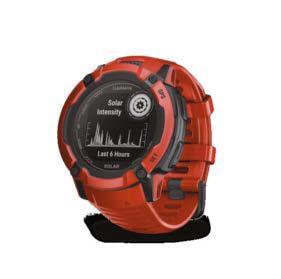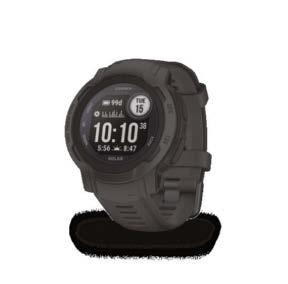

BEYOND THE ORDINARY
RISE OF THE DRAGON
Inside the thriving Welsh rap scene
READY TO RIDE
Tackle any terrain on 2024’s top trail bikes
MAGICAL MOVES
B-boy Phil Wizard on his biggest battle



RISE OF THE DRAGON
Inside the thriving Welsh rap scene
READY TO RIDE
Tackle any terrain on 2024’s top trail bikes
MAGICAL MOVES
B-boy Phil Wizard on his biggest battle
THE ONLY RACE WHERE THE FINISH LINE CATCHES YOU
MAY 5TH, 2024
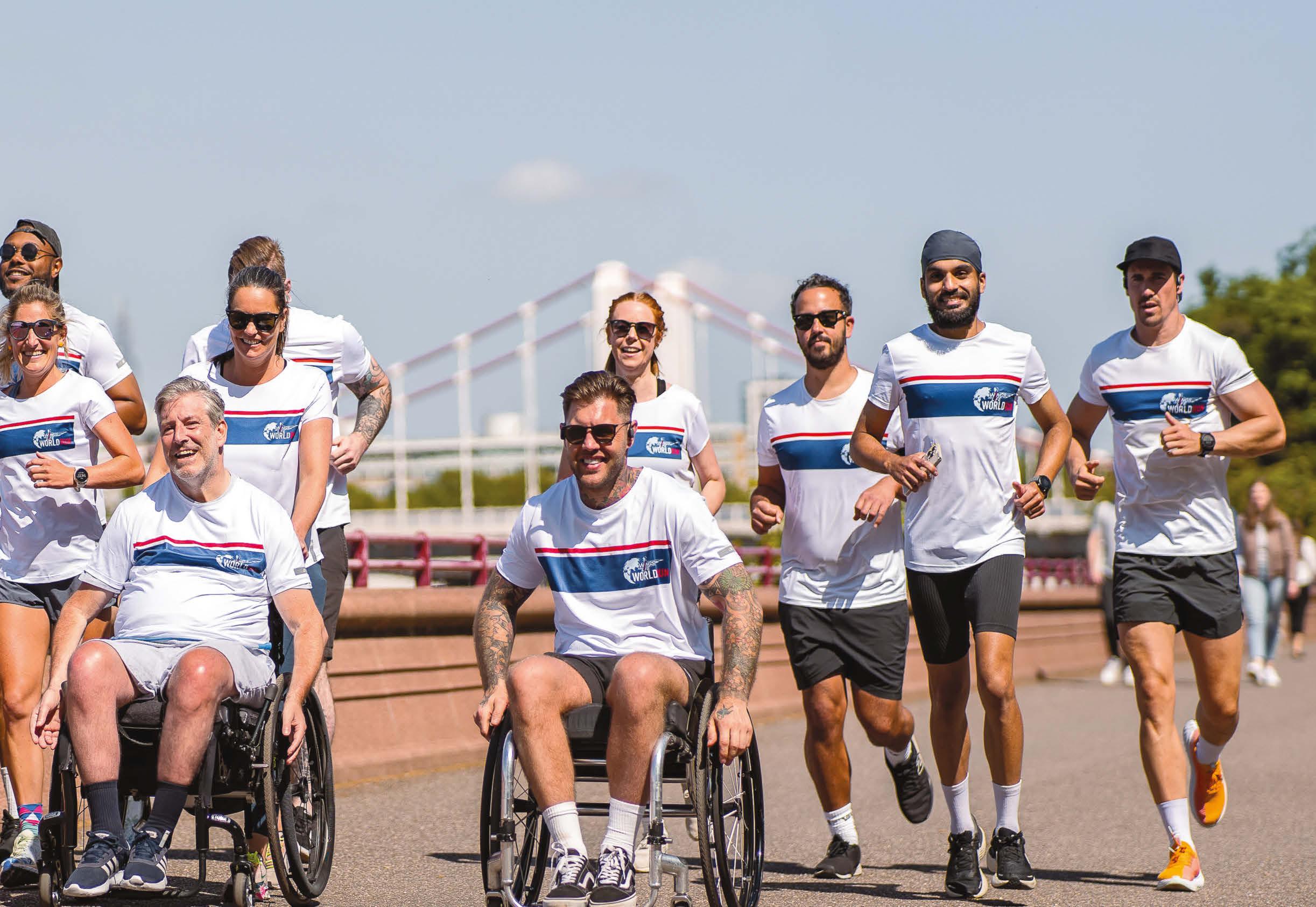



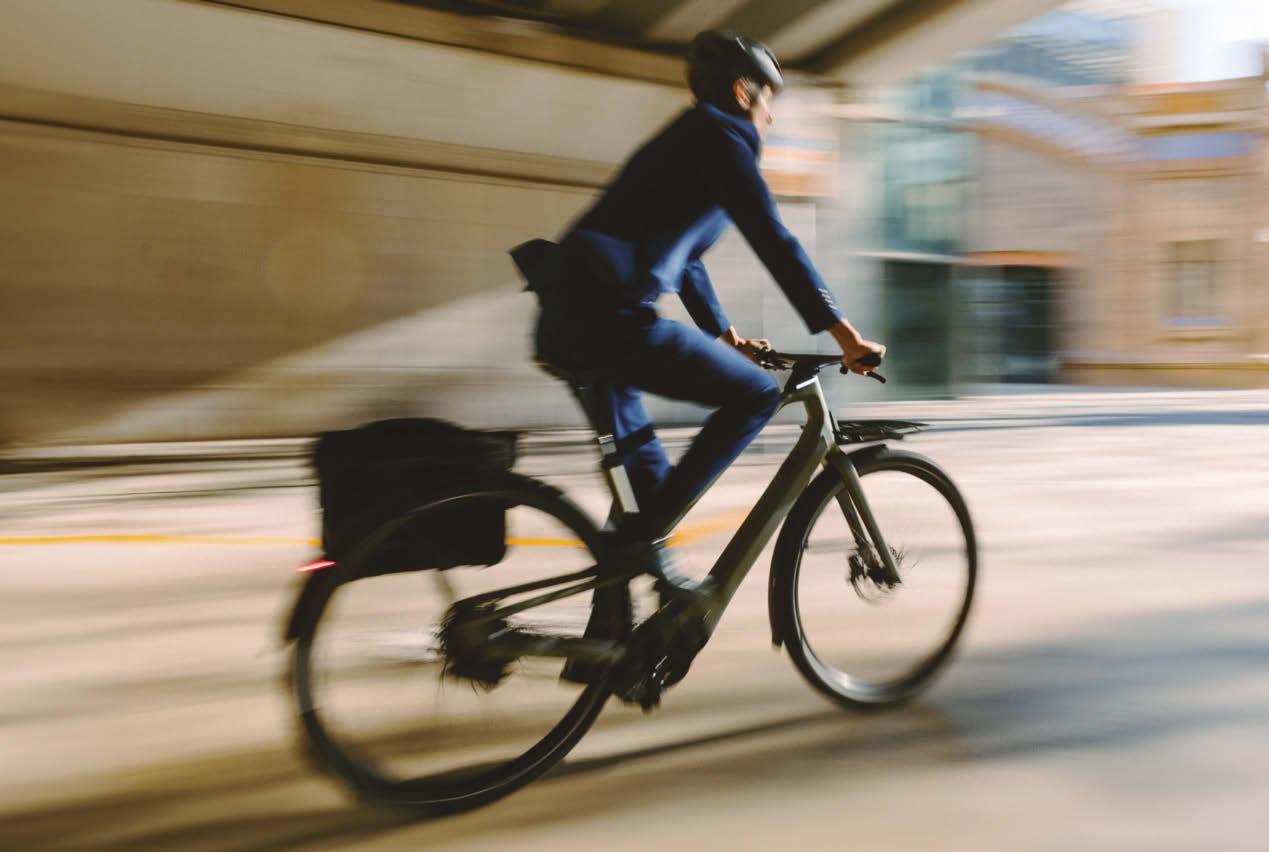

The London-based writer and radio host went to Cardif to document Wales’ burgeoning rap scene, where he met rising stars including Sage Todz and Mace the Great. “I’d thought it was a special moment for Welsh rap,” he says, “then I realised it was actually a special moment for music more generally.” Page 42

A multi-award-winning writer, Goto has slept in Elvis’ teenage bedroom and spent the night on Dolly Parton’s tour bus. For this issue, she interviewed B-boy Phil Wizard in the run-up to the Red Bull BC One World Final. “I was struck by how relaxed he was with talking about difcult chapters in his life,” she says. “He’s an open book.” Page 60

The seasoned photographer has a penchant for action sports, which served him well when running after cyclist Tom Pidcock in a Benidorm bike park for our cover story. “We started with a fat tyre, a broken fork and rain,” he says. “But Tom’s such a talented rider he can make great action in any situation.” Page 30
For this issue, we’ve travelled to the forests of Alicante, a former morgue in Paris and a Stockwell skatepark to gather stories from athletes and artists who know the value of trusting their instincts. “The moment you don’t enjoy it, it’s over,” says our cover star, world-beating cyclist Tom Pidcock. It’s for this reason the Yorkshireman – a leader in not one but three disciplines – resists pressure to specialise, insisting this approach is what keeps his riding fun. Then there’s Girli, an electropop artist also well-versed in pushing back against outside opinion. Moulded into a polished pop product as a teen, she sought out a more authentic sound and now makes music that inspires young fans to navigate their own paths. And we meet breaker Phil Wizard. To reach the next level of B-boy brilliance, the Canadian realised he frst had to escape self-induced pressure and learn to savour the process of competing. Enjoy the issue.
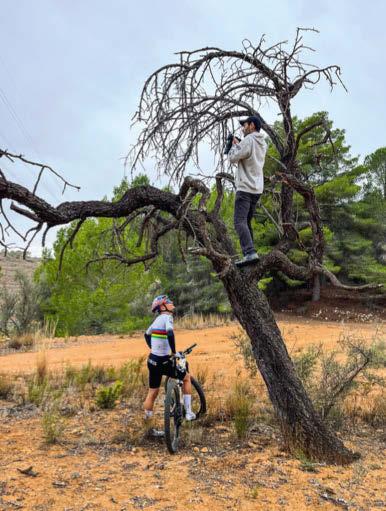



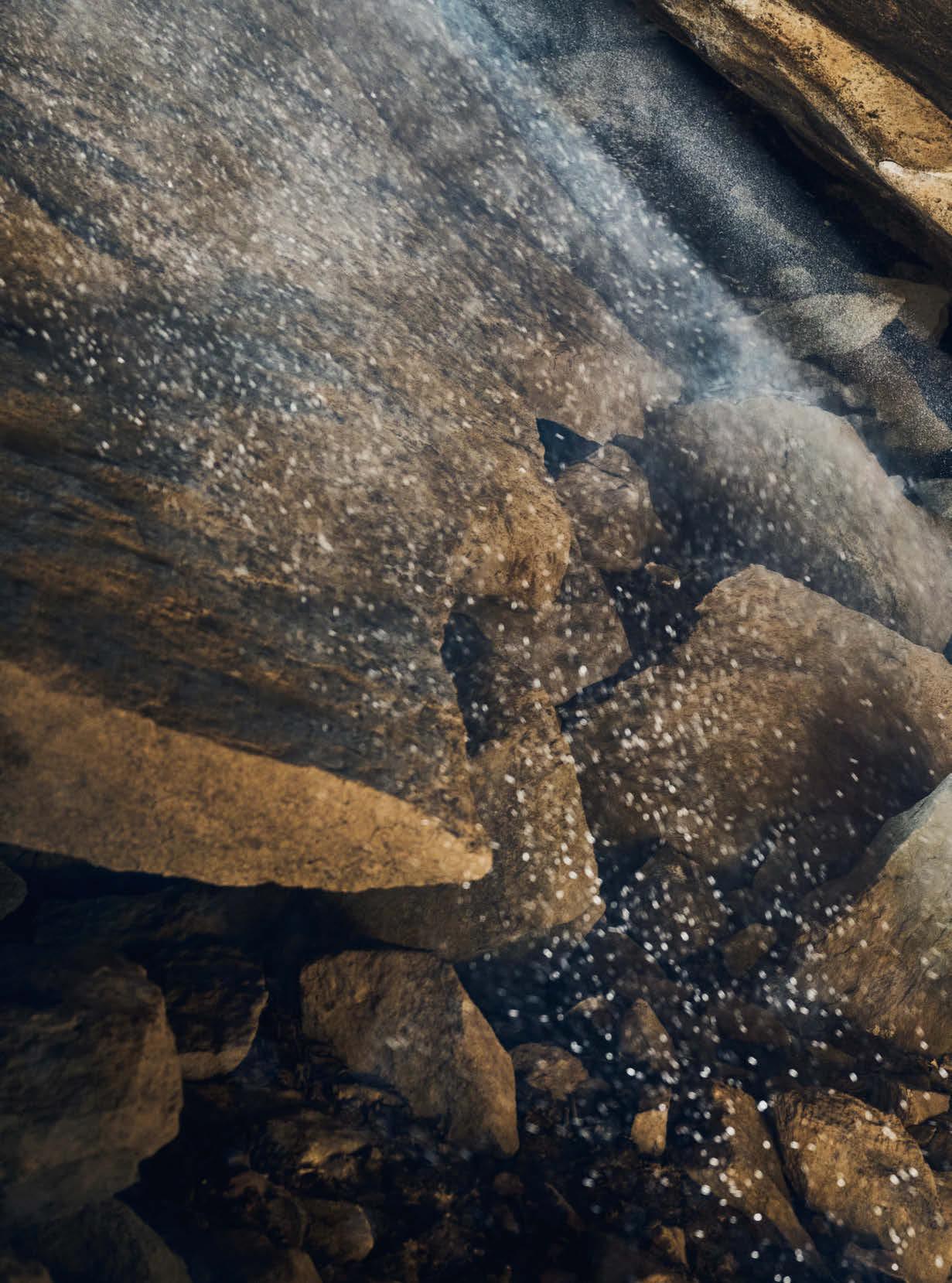
In 2010, when Bernd Zangerl visited Rakchham, a village near the India-Tibet border, the Austrian found a climbers’ paradise. His work in establishing routes while also protecting and beneftting the community is documented in the 2022 short flm Rakchham: Bridge Between Worlds. This shot of Zangerl bouldering won its director, Ray Demski, a semi-fnal place (Masterpiece by Sölden category) in the 2023 Red Bull Illume Image Quest. Watch Rakchham: Bridge Between Worlds at rakchham.com; redbullillume.com


Christchurch, New Zealand
Nick Pearson went into photography for kicks: he frst picked up a camera in 2015 to shoot his personal sneaker collection. Eight years later, the New Zealander was a Red Bull Illume semi-fnalist (Creative category) thanks to not a cherished Air Jordan but this mystery surfer on South Island’s New Brighton Beach. Pearson merged panning and action shots in his creation: “I enjoy blending shots to show speed and smoothness in what would normally be a very busy image,” he says. redbullillume.com

We know what you’re thinking: “Wow, is that the world’s tiniest skater grinding down a kebab skewer?” But no, your eyes deceive you – what you see is (averagesized) Enaitz Odria riding at a skatepark in the Basque Country. “I aim to create images that stand out,” explains local photographer Alex Berasategi Ibaieta, who secured a place in the Red Bull Illume fnal (Creative category). “Raising the drone provided a unique perspective, revealing the park’s forms and patterns.” redbullillume.com


Perched on Mexico’s Yucután Peninsula, Tulum is a tourism magnet above and below ground. Up top, it’s sea, sand and Mayan ruins; down here, the world’s largest underwater cave system. Alvaro Herrero López-Beltrán’s image of fellow cave diver Skanda Cofeld-Feith – shot in a magical hidden room during a three-hour dive, and a fnalist in Red Bull Illume’s Masterpiece by Sölden category – shows the sun worshippers just what they’re missing.
redbullillume.com

On their new album, Bristol postpunk band IDLES replace anger with love. Singer Joe Talbot picks four songs that give him the feels
IDLES’ first four albums – the third of which, Ultra Mono, topped the UK chart in 2020 – were about channelling anger as energy; raw yet melodic, their post-punk manifestos raged against the evils of the world. This approach brought the Bristol five-piece acclaim and made them one of the UK’s most beloved live bands. But on their new album, Tangk, IDLES try a different tack. Co-produced by Nigel Godrich (Radiohead, U2), US hip-hop producer Kenny Beats and IDLES guitarist Mark Bowen, the 11 tracks are atmospheric, cinematic and at times experimental, with love at their lyrical core. Here, singer Joe Talbot (pictured second from left) chooses four songs that make him emotional. idlesband.com
Scan the QR code to hear our Playlist podcast with IDLES on Spotify

Otis Redding
Change Gonna Come (1965)
“My mother listened to a lot of Otis Redding. He was, and is, a huge part of my DNA. His voice built me as a man, because I [now] understand something of what heaven sounds like. I listen to him and I feel fucking good, part of this world again. Especially Change Gonna Come, which is his cover of Sam Cooke. I think it’s better than the [1964] original.”


The Rat (2004)
“I was a troubled young man doing troubled things. When I had a bit of a meltdown, realising that I’d kind of fucked everything up, my friend Matt played me The Rat. He knew that it would give me a sense of purpose and meaning to go on. And it changed my life for ever. It gave me a reason to make music and be a part of something greater than myself.”

Colin Stetson
To See More Light (2013)
“The other day I met this guy, Don, in a hotel – he was 89! We talked about music, and he told me to check out a track called The Rail and the Road. The song I gave him was To See More Light, which is incredible – a tenor sax instrumental that’s 12 minutes long. It’s a wonderful landscape painted by one of the most talented people I’ve discovered in my adult life.”

Never Tear Us Apart (1987)
“This is a beautiful love song by a man who was desperately out to be loved, and I can relate to that. Whenever I hear it, I have this sense of nostalgia that I [can’t explain] – it’s a really magic thing. I like that happening to me, where I have a sense of déjà vu or a yearning for something that doesn’t exist. That comes a lot in music and architecture for me.”

Don’t like surprises, but do like dairy products? You’ll love the food-loving pagan resurrecting tyromancy, the ancient art of fortune-telling using cheese
If you’ve ever been curious about what the future holds, you may have been tempted to turn to soothsaying: tarot, palmistry, even reading tea leaves. One thing you probably didn’t consider consulting was your cheeseboard (unless you were seeking future signs of high cholesterol). But according to Jennifer Billock, aka Kitchen Witch, all the answers could lie in a lump of Red Leicester.
Last year, Billock resurrected the ancient art of tyromancy –fortune-telling using cheese – in her hometown of Chicago, and she has now performed more than 100 readings. “You look at variations on the surface, so you want varieties with holes or lines or herbs –anything that’s going to make shapes and patterns,” she says of the practice, first written about in Ancient Greece

and most popular in Europe in the Middle Ages.
Billock came across it while working on her Kitchen Witch newsletter, launched during the pandemic, which explores food-related superstitions and rituals. “Food was so important historically that it plays into a lot of the traditions in the pagan witchcraft world,” she says. After discovering tyromancy, Billock undertook two years of research, reading ancient spell books and divination manuals before she felt comfortable enough to practise it herself.
At a Kitchen Witch reading, the client selects four cheeses: one each to represent the past, present and future, and another to answer a specific question. All tastes are catered for – she has even read vegan cheese –but best for divination are blue cheeses, where veins of mould
can be interpreted, and Swiss, where the holes can be counted.
That said, Billock has read “literally every type of cheese”, she says. “Even a Kraft single! I just had them rip it up and drop it on the plate so I could read the shapes. If it’s a hard cheese, like cheddar, you can break it and see what shapes the ridges make… One that I’m not good at is fondue: you hold up a piece of cheesy bread and it drips off. You’re supposed to be able to look at the shadows and the shapes, but it was a nightmare.”
When it works, cheese has allowed her to identify the bride at a bachelorette party without help, and to deduce a chef planned to quit his job and open his own restaurant. She acknowledges tyromancy isn’t for everyone, however. Around half of those who visit for readings are “people who take it really seriously; the others just think it’s something weird and fun to do”, says Billock. “Which is how I feel about it, too! I would say that there’s a lot we don’t know, so keep an open mind. And even if you don’t believe in it, you’re still gonna get to eat cheese!”
kitchenwitch.substack.com
Camembert skills: Chicagoan Jennifer Billock, aka Kitchen Witch, foresees with cheeseEXPERTLY ENGINEERED CYCLE WEAR. FOR ROAD AND RUIN.

THRUDARK.COM

Granted rare access to the inner workings of motorsport, photographer Jon Nicholson ofers a fresh perspective on its passions and tensions
For all the excitement of a Formula 1 car roaring past in a blur of colour at 300kph, Jon Nicholson knows the real drama of a Grand Prix is in the garage. “Sometimes it’s not about the action; it’s about the potential result,” says the West Sussex-based photographer. “The garage is where the tension is. And, for me, that’s where the picture is.” Indeed, it was in the Williams garage at Imola in 1994 that Nicholson took what is believed to be the last-ever photo of Brazilian F1 legend Ayrton Senna, staring intently at a monitor just hours before his fatal crash.
A photographer for more than 40 years, Nicholson has now had his extraordinary pictures from Formula 1 and beyond compiled in a book, Macchina. The F1 images wouldn’t have been possible without the unprecedented access granted by long-time friend and world champion Damon Hill, with whom he shared an office in his early twenties. “We always had this dream that one day he might win the world championship and I’d be there to take his picture,” Nicholson says.
With Hill vouching for him, the photographer was able to roam tracks, paddocks, grandstands, garages and even cockpits, digging beneath the surface of the sport. “I’m actually not really a race fan,” says Nicholson. “I loved going, but I didn’t really care who was
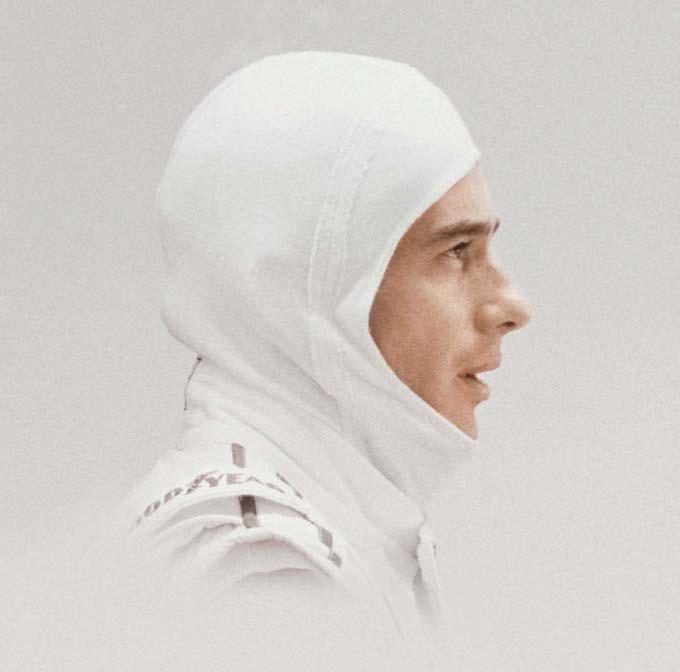

on pole. I’m more interested in the whole weekend: the people, the drivers, the fans, how the athletes prepare. [As for] the cars going round and round, I couldn’t really see the point!”
Using a Leica camera with a short lens to stay inconspicuous, Nicholson searched for stories to tell, getting to know the mechanics behind the scenes, and roaming fan zones like the hillside at Imola, where “everyone turns up and starts digging, making little platforms where they can put a mattress, sleeping bag and stove to stay the whole weekend”, he says.

“To go to Monza, to Hungary, to Hockenheim, and see the intensity of people’s passion for 22 cars going round in circles was amazing. I suppose it’s like going on tour with the Rolling Stones in the ’70s – just an incredible power and energy. I did get nervous before a race. When standing on the grid, you’re right in the cauldron.”
In Macchina, Nicholson also explores a wider need for speed beyond F1, travelling to Mexico for the Carrera Panamericana road race and to Southern California for NASCAR – a motorsport with its roots in the transport of illegal alcohol in the US during Prohibition.
By broadening his horizons, the photographer has created “almost a history of racing” and, he says, discovered that “all the other racing is just as important as F1. You go to these rallies and the vibe is exactly the same. When you go around the back and find the people who can’t get a ticket peeking through the fence –that’s where the passion is”.
Macchina, published by Fyshe, is out this month; jonnicholson.co.uk

Wireless muscle stimulation
Enhance performance, strength, endurance & recovery








The English explorer swapping long-haul for local, 4cm of map at a time
When Alastair Humphreys decided to get to know his local area better, the last place he expected to find himself on a damp autumn day in suburbia was abseiling into the darkness of a dene hole with a harness and head torch, adrenaline thrumming through his veins.
“It felt thrilling, like I’d gone back a thousand years and done some time-travelling,” Humphreys says of the ancient underground chalk caves, which were excavated and used for agricultural purposes during the Middle Ages. “This was an experience I’d never had anywhere in the world, and I was finding it a few miles from my front door.”
This was just one of many surprises that the seasoned,
47-year-old adventurer stumbled upon in his latest project: spending a year exploring the area around his home in south-east England and documenting his findings in a book titled Local. After a career spent cycling 74,000km around the world, rowing across the Atlantic, hiking Arabia’s ‘Empty Quarter’ and packrafting across Iceland, Humphreys says, “I realised I knew far more about distant continents than my own neighbourhood, and I wanted to do something about it.”
Having ordered his local Ordnance Survey Explorer Map – one of 403 available, each documenting a 20km x 20km section of British land – Humphreys picked a random

1km grid square each week for a year. Once chosen, he cycled, walked and jogged through that area, using it as an excuse to get outdoors, go slow, and apply microscopic inspection to every footpath and forest he encountered.
As well as discovering dene holes, he used phone apps such as Seek by iNaturalist to identify plants, and Merlin Bird ID for birdsong, focusing on small details that he might otherwise have missed: that chiffchaffs are harbingers of spring, that mudlarking provides an opportunity to savour the process of searching, and that a partial eclipse witnessed from his local cricket pitch could be just as inspiring as a sunrise in a distant destination.
The Local project was the logical next step in Humphreys’ mission to question what ‘adventure’ really means – an evolution of the ethos he’d previously detailed in his 2014 book Microadventures “That book was about taking all the things we love about big adventures and compacting them into short, simple, affordable things we can fit into our busy lives,” he says. “For Local, I took things a step further, trying to get everybody to notice the nature that’s right there on their doorstep.”
While keeping endeavours small and local for a year might seem to render bigger, more ambitious adventures obsolete, Humphreys maintains that the two aren’t mutually exclusive. “There’s no substitute for strapping a tent to your bike, pedalling away, and heading as far as you can until you run out of time and money – I really can’t think of anything more exciting,” he says. “But, given that most of us aren’t in a position to cycle to China, until that day arrives I’d encourage everyone to explore their local map, too.”
alastairhumphreys.com

“I was always thinking, ‘Why am I wasting so much energy?’” says Navickas, speaking from the Tukas EV factory, where he’s surrounded by bikes made from recycled aluminium and customised in a variety of bright colours. On average, he says, a person can generate between 50 and 300 watts by cycling for an hour on the HR Bank, meaning that just 15 minutes of pedalling generates enough power to charge a smartphone, an hour charges a laptop, and two hours would power an oven to bake a pie.
Glancing down at the data display, where you might usually see your heart rate and the distance cycled, the bike updates you on when full battery capacity will be reached. If you’re too tired for a workout, it can also store energy from other sources, such as solar or wind.
Want more motivation to cycle? This exercise bike turns your pedal power into green, usable energy – anywhere
When disaster strikes, there are two things that people rush to take care of, says Jonas Navickas, CEO of sustainable energy company Tukas EV: “Water, and charging their phones – to have safe water to drink, and the possibility to communicate.” This was what hit Navickas as he watched reports of the war in Ukraine just 700km from his home in the Lithuanian capital, Vilnius.
“I tried to help as much as possible,” he says. “Last year, there were a lot of problems with [Ukraine’s] infrastructure – electricity stations were HR BANK
being bombed – so we thought about how we could help solve this problem.”
Inspiration struck on a Friday evening, and by Monday morning his design team had produced early drawings for what Navickas describes as “such a simple idea”: an exercise bike that harnesses and stores the kinetic energy produced while pedalling. In October last year, the company launched the HR Bank, a bike that doubles as a power station with the capacity to store as much as 2kW of electrical energy.

Although designed with emergency situations in mind – war zones in vital need of a reliable energy source; natural disasters; cyberattacks – the HR Bank is a win-win for anyone looking to reduce their dependence on fossil fuels. Its portability – the bike is wheelable, weighs just 41kg (in its lower-spec, 0.75kWcapacity iteration) and has removable pedals – even opens up all manner of possibilities for off-grid living.
And as Navickas explains, the act of physically producing your own electricity gives users a tangible appreciation of their energy consumption.
“When you’re pedalling [the HR Bank], you understand how much energy is required just to power the lights,” the CEO says. “After that, you’re always thinking about it. It’s an education. Otherwise, electricity is just something that you pay for once a month and then forget about quickly. When you’re generating your own power, you’ll always switch the lights off when you go out.” tukasev.com/en


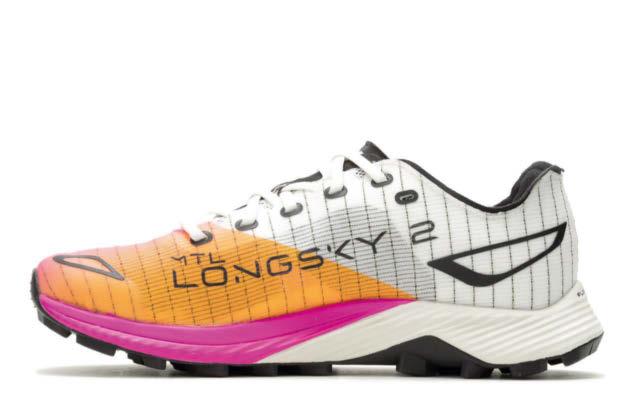






As Red Bull Hardline, the world’s gnarliest downhill MTB event, celebrates its frst jaw-dropping decade, creator DAN ATHERTON explains how childhood sessions with a spade led him to the cutting edge of the bike scene
WORDS TOM WARD PHOTOGRAPHY DAN GRIFFITHSDan ‘Affy’ Atherton’s earliest memories are of digging in the woods near his home in Salisbury, Wiltshire, crafting bike tracks with his siblings Gee and Rachel. “We would go out there and dig, then catch the school bus,” he recalls. “After school we were back out there, making jumps.”
In the three decades since building those childhood trails, the Athertons have become perhaps the most overachieving siblings in the history of sport. Gee is a multiple world champion in downhill MTB, Rachel a UCI world champion many times over. And Dan, the eldest, has his fair share of trinkets, with wins at national and international level in downhill, four-cross and enduro.
The 42-year-old’s lifelong passion for building jumps and tracks has also led to the creation of downhill MTB’s most notorious – and toughest – event: Red Bull Hardline, which is celebrating its 10th year. Held annually at Dyfi Valley in the hills of Mid Wales – close to where Atherton now lives off-grid in the woods – this invite-only challenge presents 30 of the world’s best and bravest riders with a series of drops, step ups, step downs and gaps that make a World Cup course look tame in comparison.
To mark the occasion, Atherton took Hardline to Tasmania this February for its first international outing. The Red Bulletin caught up with the rider moments after his arrival back in the UK and asked what a decade of Hardline has taught him about gnarly jumps, the evolution of downhill, and legacy…
the red bulletin: What has made Red Bull Hardline so enduring?
dan atherton: We tried to think of all of these new ideas [when coming up
with a format], but ultimately we settled on the simplest one: do a downhill race and make it the hardest race in the world. Everyone can get their heads around it without knowing much about the sport, and I think that’s been key.
When digging trails as a kid, did you ever imagine you’d be creating them for the world’s best riders?
Never. To have it progress to this level is unreal. What I take from it every year is just how invested the riders and the builders are. They’re always coming to me with new ideas to push the tracks in a way that you might not have even thought was possible. All of that helps progress the event, and the sport, which is amazing. It isn’t just a race to us.
You and your siblings have all suffered serious crashes while riding. How does knowing the risks of the sport affect the approach at Hardline? Interestingly, as Hardline has progressed there have actually been fewer accidents. We want people to progress their riding, not injure themselves, and with things like Gee’s [recent] accidents, we’re more aware than ever of nailing the balance between gnarly and being safe. The standard of riding has also improved, plus we’re building courses with the weather and timings within the event season in mind. If it’s going to rain, you have to think about that, and no rider will want to go all-in in the first event of the season. We’re now more aware of balancing all that.
Ever built anything you couldn’t ride? Of course. Other people test the course now, and it’s great to watch. I let go of the ego of needing to be able to do everything because Gee and Rachel were so good growing up. It’s the same today when pros come to Dyfi Bike Park:
they’re better than me, and I’m psyched to see them ride. Hardline is the same.
How has top-level riding changed in the past 10 years?
The sport is becoming more specific. You have riders specialising in World Cups, and others dropping out to focus on events like Hardline and Darkfest [in South Africa]. It’s pushing the sport massively. Kade Edwards and Kaos Seagrave are amazing – they stopped riding World Cups to do events like this – and Jackson Goldstone from Canada is just so natural on the bike. You can tell these boys grew up with it in their blood. They’re going to take it to the next level.
What made Tasmania the right location for the first international Hardline event?
You really do feel like you’re at the end of the world when you’re in both Wales and Tasmania. Both have an underdog mentality of wanting to show people what they can do. Everyone was so curious and hungry for it – there were 6,000 people watching. It was unbelievable.
What can riders and fans of the UK event in Wales expect this year?
We’re planning to make the course new from the start, all the way down to the big double 90ft [27m] jumps about threequarters of the way through. Which would be a big change, the biggest in 10 years. We want something big and public to celebrate that milestone. It’s all about progression, to keep this event and the sport evolving.
Tune in to the 10th edition of Red Bull Hardline on June 1-2, 2024, on Red Bull TV; redbull.com
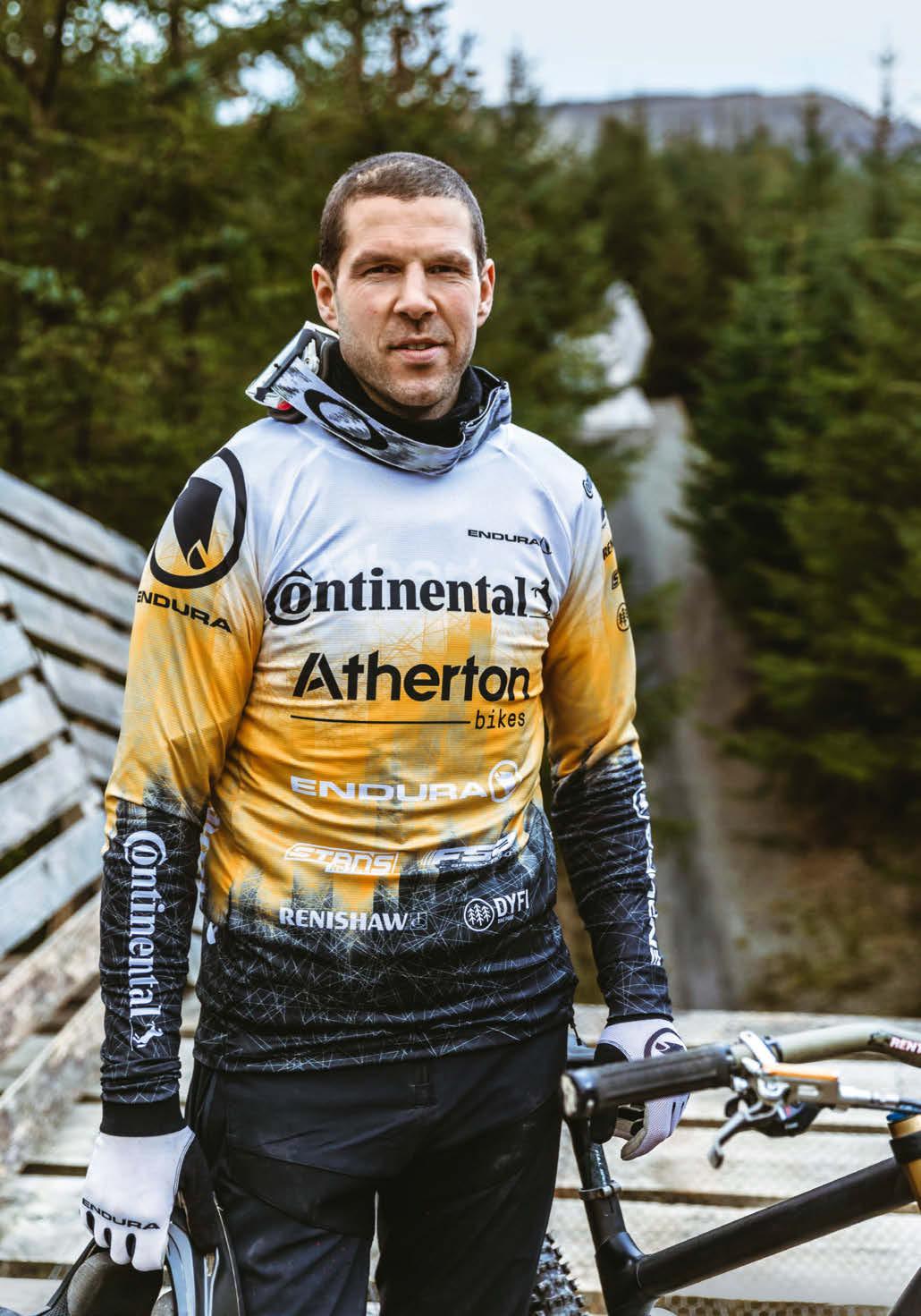
“The riders and the builders are so invested. It isn’t just a race to us”Hardline boss: Dan Atherton is progressing his sport
Discovering the ocean gave ZANDILE NDHLOVU a new sense of freedom. Now South Africa’s frst Black female freediving instructor is passing it on
WORDS JESSICA HOLLAND PHOTOGRAPHY PIER NIRANDARAZandile Ndhlovu was 28 when she fell in love with the ocean. Eight years later, she’s South Africa’s first Black female freediving instructor and the founder of The Black Mermaid Foundation. Her journey to this point has not been without detours. When Ndhlovu was a child growing up in the township of Soweto, her mother couldn’t afford the entrance fee for the local pool, so the young tomboy would get into trouble instead. In early adulthood, she trod a more conventional path for a young Black South African woman, landing a corporate management job and entering into a traditional marriage with a dowry.
When her husband told her he wanted to separate, Ndhlovu looked for her own escape. In the aftermath of this news, she travelled to Bali, where she signed up for a snorkelling trip. The experience was terrifying at first, says Ndhlovu, but then, when the fear had eased, transformative. On returning to Johannesburg, she took up freediving, exploring the ocean depths without scuba equipment, and learning to hold her breath for ever-longer stretches.
In 2020, she qualified as a freediving instructor, only later realising she was just the second Black South African – and the first Black SA woman – to do so. Now she’s fighting to redress the imbalance established by apartheid, which severed connections between Black communities and the ocean. Her foundation introduces young people to the sea, and Ndhlovu also has a children’s book and a film in the works. “I’ve lived in a world that says survival comes first,” she says. “By actively living my life, I feel I give people permission to dream differently.”
the red bulletin: How did you feel on that first snorkelling trip? zandile ndhlovu: I was in Bali because I needed space to be able to tell my family I was failing at this thing [marriage] that everybody else had figured out. I didn’t even know how to use a snorkel. But when I met the ocean, I finally found home. [A place] where I’m not the oddball, I belong. Growing up as a girl is tough: “Stop that, it’s not what girls do.” The corporate world was a new type of noose around my neck. The ocean made me feel normal, that it’s OK to be different. There were Moray eels, turtles and sharks, and one of them wasn’t more beautiful than the other; it was just different kinds of beauty and weirdness. It gave me a sense of freedom.
Describe the freediving experience… For the first 10 metres of the descent, you need to use your fins. Then, at about 13 metres, you begin to freefall. It’s like you’re flying through space, like you’ve left your body. As you surface, you take the biggest breath and it’s as if you’ve joined life again. The day I first got to [a depth of] 20 metres, I could hear whale song when I equalised. It was magical.
What skills does freediving teach you? We live in a world that tells us if something is uncomfortable we need to stop. But in freediving you encounter the most insane kind of discomfort, and the only way forward is to touch that fear. Freediving is about the here and now, and that changed my life. I don’t have to be looking at a five-year plan – the intentionality of today will build all the worlds I could dream of. That’s proven to be true in my life.
What did your family think of your career pivot?
Everyone was mortified. I was putting the family at [financial] risk by deciding
to take a chance on this. But I felt that I’d done my part to try to keep things secure. It was my turn to live a little.
Why are there so few Black South Africans in freediving?
South Africa has had a hard history. Back in the day, people were displaced from ocean-facing homes, and the safer beaches were not for Black people: you could face jail time for going there. So there was a narrative that said, “That’s not your place.” My work is about creating access to the ocean and also reinforcing the idea that you don’t need permission to be there. These waters are yours, too.
How do kids react on your Black Mermaid Foundation trips?
I remember this little girl who was scared to put her head underwater. She held my hand and went under for three counts. Then we tried five. But when she was supposed to come up, she didn’t. Finally her head came out of the water, and she told me she was looking at a starfish. She’d stopped shaking. Seeing the look in her eyes transform from fear to awe, it made me cry.
Do you have any advice for others on how to overcome fear?
When you feel fear, you need to know you’re on holy ground. When you touch it, you fall through into the most magical space. You will expand in ways that you could never imagine. It’s never too late, you’re never too old, and it’s not about where you come from. To be a girl from Soweto and become a mermaid to the world… if you want [a dream], it wants you. When you meet it, it elevates you. But you have to touch the fear. blackmermaid.co.za
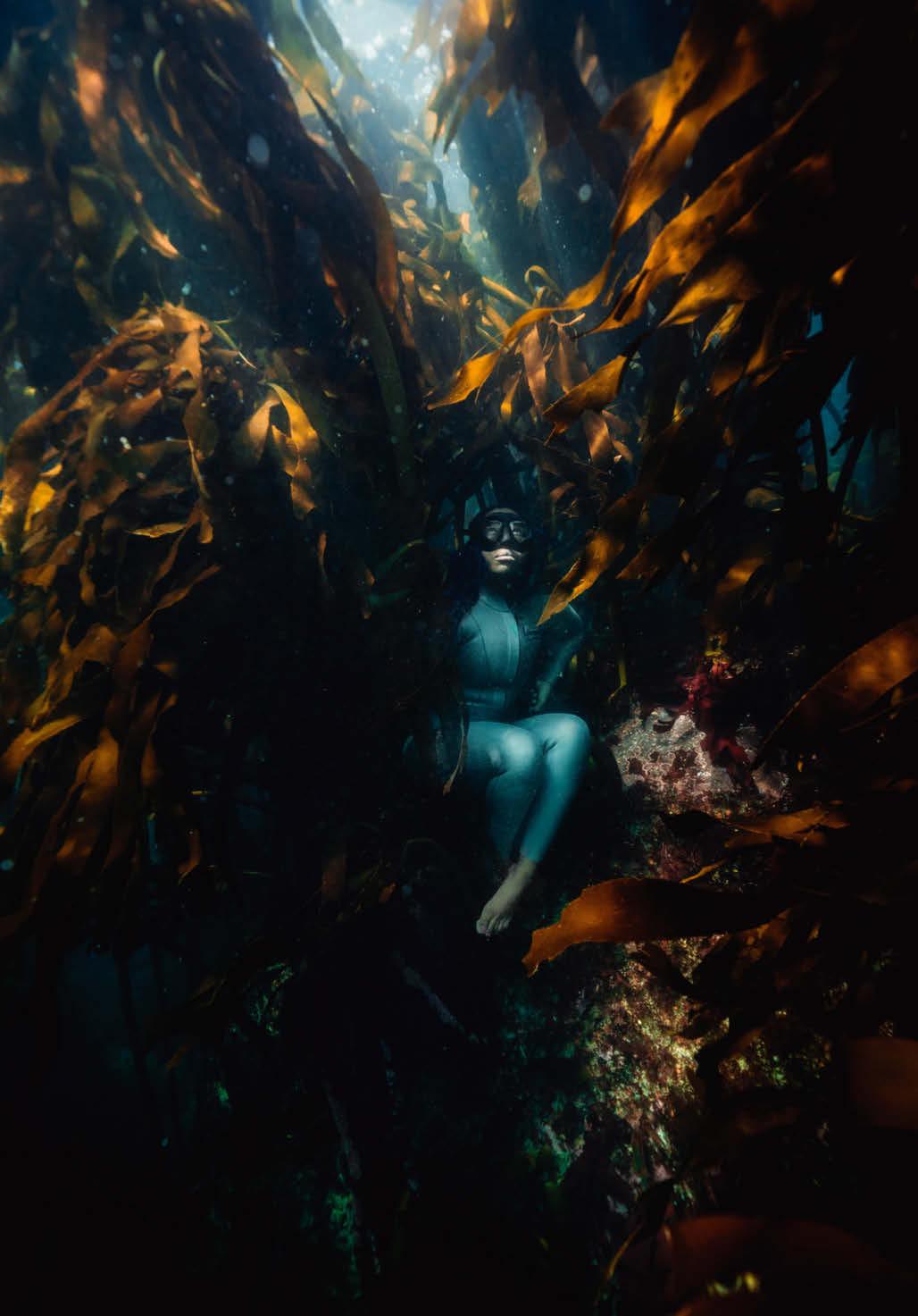
“When I met the ocean, I finally found home. A place where I belong”Zandile Ndhlovu’s Black Mermaid Foundation is putting the diver in diversity
When BEN TANSLEY found himself in a wheelchair after being paralysed in a motorbike accident, he promptly entered a 5K race. Now walking with crutches, his sights are set on Mount Snowdon
Ben Tansley was strapped to a hospital bed when he made his first venture into disability sport. Just three weeks earlier, life had been very different: his day-today was running the boxing gym he’d opened at 26 – a lifelong dream after his time in the ring as a youth – and parenting duties as the father of two young children. Then, on August 13, 2017, the family were on a typical day out, riding motorcycles to the coast near their home in Kings Lynn, Norfolk, when Tansley was knocked from his bike. He suffered a T4 spinal injury and was paralysed from the chest down.
The British Paralympic Association was surprised to hear from him. “I said I wanted to get involved,” explains Tansley, now 38. “[The person I spoke to] said she’d never had anyone contact her about competing three weeks after being paralysed. But you have to make the best out of the worst situation, don’t you?”
Despite being told he’d never walk again, Tansley spent the following weeks determinedly attempting to wiggle a single toe. And just a day after his discharge from the Princess Royal Spinal Unit in Sheffield, he completed his first event as a para athlete – a 5K Parkrun in his wheelchair. “That was my way of showing the kids that I’m still me,” Tansley says. He went on to complete the Berlin Marathon in his chair and, following an unwavering dedication to his physiotherapy, is now able to walk with the aid of crutches.
Tansley’s latest feat was taking part in the Red Bull 400 in Planica, Slovenia – a gruelling 400m event that challenges competitors to race up a ski slope with 202m of altitude gain. There was a moment, halfway up, when Tansley
thought he couldn’t reach the top. “This internal battle started,” he says. “That little voice saying, ‘You can’t do it, you need to stop.’ But I pushed through it. I would have crawled to the top if I had to – I wouldn’t let it beat me.”
This determination and resilience have underpinned every step of Tansley’s journey, whether reaching a 400m summit on a 37° incline or confounding the doctors who said his sporting life was over. And he’s not done yet…
the red bulletin: What drives you to challenge yourself?
ben tansley: I’ve always had this mindset of being the best version of me that I can. In the hospital, when I heard the doctor say I’d never walk again, I felt it in my stomach; it winded me. I asked her, “How do you know?” and she said I’d damaged my spinal cord so badly that it was “highly unlikely”. But “highly unlikely” is very different to “never”. I accepted I’d always be in a wheelchair – I had to – but that was my little bit of hope. My mentality has always been to accept the worst and then push to beat the odds. That’s what drives me.
How did you keep going in those first few months?
For my whole life, my physical ability had been my superpower, so it was tough. I’d always had this confidence that I could save anyone, and [now] I had to start applying that to myself. I remember saying to my mum that she couldn’t come and see me if she walked in looking sad, because, to me, one door might have closed but many more are still open. It was the same with my kids: if I let them see me feeling that life had beaten me, what does that say to them? I never want to look back and think about what I’ve lost. I just threw myself into everything.
I smashed through the physiotherapy and was out of hospital in under three months. By then I was independent again, and I was soon walking with the aid of crutches.
How has your accident affected your outlook on life?
I do believe that everything happens for a reason; the accident was written in my stars. It has inspired me and so many other people to do so many things. I think that’s how the world works: we inspire each other. When the internal battle starts, I thrive on that sort of thing. I’d hardly trained for [the Red Bull 400], because I wanted to feel that mental resilience. I was on my crutches, determined to get up there one way or another – at some points I dropped to my hands and knees, then I got back on the crutches again... You have to hold onto that little bit of hope. And I had my son there, doing it with me.
What’s next?
In May, there’s the Wings for Life World Run, which I’m really proud to be taking part in. Wings for Life [the non-profit spinal cord injury foundation] has always stood out to me because it’s a charity that’s actually trying to solve the problem. Its work gives me hope that at some point the issues I’ve faced will no longer be an issue. I’ve also thought about climbing Mount Snowdon, and I’d love to walk the London Marathon. That might be next year’s goal. But I just like to take life as it comes. That’s my new superpower. Take part in the Wings for Life World Run wherever you are. For entry information, visit wingsforlifeworldrun.com

“I like to take life as it comes. That’s my new superpower”Athlete Ben Tansley has no time to dwell on the past; he’s too busy smashing new goals

Cycling triple-threat TOM PIDCOCK is set on securing the ultimate legacy. And his dreams don’t end there…
Words MARK BAILEY Photography JB LIAUTARD
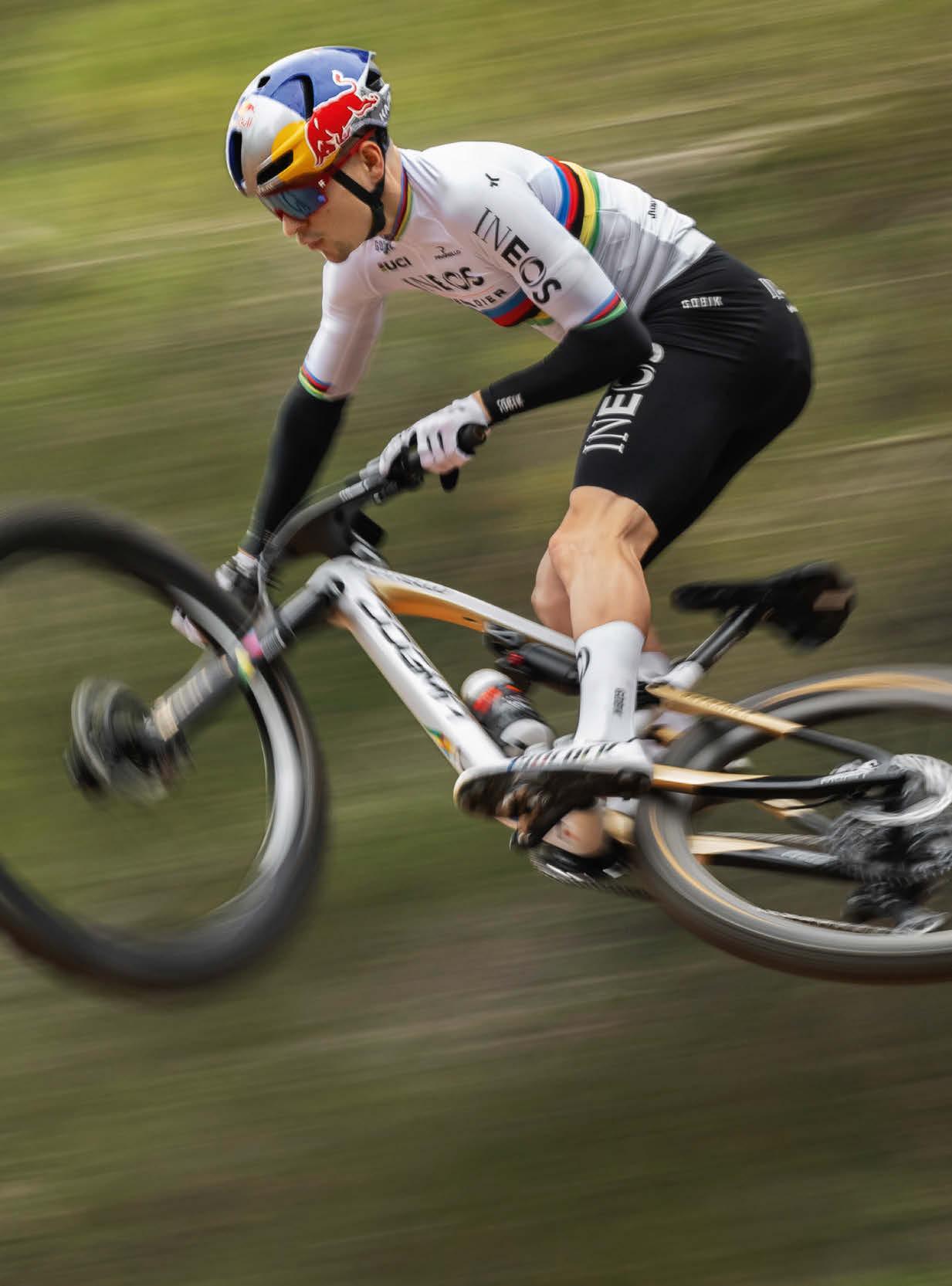
There’s a jaw-dropping video of Tom Pidcock racing down the 2,642m Col du Galibier with the speed and skill of a fighter pilot. It was stage 12 of the 2022 Tour de France – the day Pidcock blasted up Alpe d’Huez to become, at the age of 22, the youngest winner of the most iconic stage of the world’s biggest road race. But that dazzling descent earlier in the 165km stage showed why Pidcock – a unique, multi-threat talent who’s winning an unprecedented mix of road, mountainbike and cyclo-cross races – is so loved and so feared. He unleashes outrageous moves honed in chaotic offroad races, overtaking and undertaking astonished riders, speeding around hairpin bends and manoeuvring his bike with the cool grace of a figure skater. His top speed that day was 100.8kph.

Today, on a shoot at a bike park in Alicante, Spain, days before a cyclo-cross race in Benidorm, Pidcock is demonstrating the off-road skills that made the epic on-road descent possible. With his choppy hair and boyish grin, the Yorkshireman looks like a normal 24-year-old – until you see him ride. On his white mountain bike, sporting the prestigious rainbow jersey of the world cross-country mountain-bike champion, Pidcock swirls down the track like fast-flowing storm water, his wheels skidding and kicking up dust on bends. Then he slams on the brakes and, with miraculous skill, bunny-hops through a 360° standing turn, before shifting gears and effortlessly grinding up the steep track. Road cyclists can’t do this stuff. And it makes Pidcock a game-changing threat.
“I don’t know how you describe the sensation, but it is like a journey to improve,” reflects Pidcock later at his hotel when we chat about those famous descending skills. “Like, if you’re on a track in a car, every lap you’re trying to get a better line. It is the same with descending: ‘Oh, I just braked a little too
Riding high: Pidcock tackles Alpe d’Huez – and triumphs – on stage 12 of the 2022 Tour
“Variety is great. It makes you a more rounded rider”Tom Pidcock
hard there.’ Or ‘I could have carried a bit more speed’. Or ‘I should have turned in later’. It’s a great feeling to know your limits and to keep improving.”
Pidcock is forever hunting the sweet spot between risk and reward. “If you’re going off adrenaline, it’s dangerous,” he says. “People think it’s dangerous what I do, but it’s not. It’s all calculated and skill-based, and I know my limits very well. And I get terrified if I start to go beyond my limits. Like, I remember going for a drive in my car once and I was getting a bit carried away, so I pulled straight over and stopped. I was like, ‘Yeah, OK, that’s getting a bit too much.’ My brakes set on fire, because you should never stop a car straight up [hot brakes need airflow to cool them]. So I operate within my capabilities.”
As a reminder to stay composed and tactically sharp in races, Pidcock has ‘Play Your Cards Right’ written across his gloves and bike. But cycling will always throw up hazards. Today he has two black eyes, and a plaster over his nose – the legacy of a crash in a winter cyclo-cross race. Pidcock reveals more scars: “One from my [broken] collarbone [in 2021], a big scar on my knee, and from the Tour de l’Avenir [in 2019] I have three fake teeth.” Pulling up his lip, he reveals a blue scar from his recent crash. “I can’t say Ps very well with my big, fat lip,” he chuckles.
Pidcock’s desire to push his limits in races neatly mirrors his bold, ambitious, multidimensional career plan. He has ripped up the cycling rulebook, which says you must specialise to succeed, and forged his own multi-forked path by ambitiously fusing disciplines and skill sets. Pidcock enjoys blasting across mud, grass and gravel in cyclo-cross races and has banked junior (2017), under-23 (2019) and senior (2022) world cyclocross titles. His most natural discipline, he says, is cross-country mountain biking, in which he won gold at Tokyo 2020 and a world title in 2023. But Pidcock also relishes the speed and stamina of road races: he won the 184km Strade Bianche in 2023 and, having finished 13th at the 2023 Tour in just his second appearance, is tipped as a future winner of that iconic event.
This summer, Pidcock is targeting the Tour and another mountain-bike gold. “I like to combine them all, because they bring different skills and keep me feeling
fresh,” explains Pidcock in his strong Yorkshire accent. “Being an elite athlete, everything is usually about repetition, so the variety is great. And it makes you a more rounded rider.”
Pidcock is a next-generation cyclist. At 170cm (5ft 7in) and 58kg, he fuses a slimline physique – perfect for big climbs and long miles on the road –with muscular, MTB-sculpted thighs that bulge like loaded weapons. Off-road riders struggle to match the speed and endurance that Pidcock hones when riding 3,400km across France on the Tour, and road cyclists can’t live with the instinctive bike-handling skills and explosive surges he’s learnt off-road.
But mixing up races also makes him happy. This sense of fun fuelled Pidcock’s childhood rides with his mum Sonja, dad Giles and younger brother Joe, his teenage training sessions around the roads and trails of Yorkshire, and his amateur racing days. And it still drives his pro-racing career today. “I need something new all the time,” Pidcock says. “Now, I can train for a month, staying in the same hotel, or train in an altitude room [at home], and I can commit… But I’ve not yet built up the ability to commit to six months of something.”
To keep things fun and fresh, he races cyclo-cross during the winter, then switches to the road for spring and summer, with MTB races sprinkled in between. Other cyclists find this bizarre, but Pidcock might be onto something. In his 2019 book Range, David Epstein highlights the advantages generalists have over specialists. Drawing on scientific research and case studies, the writer argues that by extending your “sampling period” – the period when athletes explore different interests before specialisation – and widening your skill set, you become a more diverse talent, better primed to learn and blend new skills, adapt to new experiences and experiment creatively, and you become more resistant to burnout.
“Yeah, I completely agree,” nods Pidcock, who is intrigued enough to note down the title of the book. “It means it doesn’t become tedious. But I also kind of thrive off being good at things I enjoy.” Plus, as an independent spirit who lives off-grid in remote Andorra, he likes playing the maverick. Other riders do the full MTB season, but Pidcock stays fit on the road, then turns up at big races and often ends up winning. “I enjoy being able to get on a mountain bike,


“You have to enjoy pain. As soon as you don’t, it’s over”
Hard knock life: Pidcock’s battle scars include permanent reminders of a cracked collarbone and broken teeth

All areas covered: no terrain is too tough a challenge for 24-year-old rider, whether it’s mud or rock, grass or gravel

“When I’m under the hammer, when the pressure is really on, that’s when you get the most out of me”Tom Pidcock
not train [specifically], and then win,” he says. “I like being that outsider, that guy who’s not really a mountain biker but is quite good at it.”
People assume Pidcock must be cocky, but he seems bewildered at the attention he gets. He can be self-deprecating, revealing that he gobbled 10 flapjacks on his 22nd birthday, and giggling “I had an oopsie” after a harmless tumble during the shoot. But he does have a steely determination. “I want to build a legacy,” PIdcock declares. Adding the Tour to his Olympic MTB gold and world cyclo-cross title would represent a historically diverse hat-trick. And winning a world road title would make him the first man to win the world road, cyclo-cross and MTB treble.
This quest for a “legacy” is key to understanding Pidcock. On one level, it represents a deeply personal desire to build a scrapbook of memories. “I’ve kept every bike I’ve won a world title on, with the mud and dust still on it,” he says. “I have a jersey from every team I’ve rode for. And there’s a little cubbyhole in my bedroom at my parents’ house where the wall is covered in [my racing] numbers. So I keep everything.”
The Red Bulletin produces a phone and Pidcock browses iconic photos from his career. One of his favourites is an image showing his triumphant arrival, alone, in the medieval city of Siena at the end of the Strade Bianche – an epic dash across Tuscany. Arm raised in celebration as crowds line the historic Piazza del Campo, Pidcock looks like a gladiator in the Colosseum. “Fond memories,” he purrs. “My first big win on the road. OK, Alpe d’Huez [was good], but this was like, fair and square, I was the strongest. It was a big point. And it always will be.”
This is the kind of memory Pidcock wants to treasure. But building a legacy also means entertaining and inspiring others. “It’s the impact you have on people, the wider picture,” he insists. A natural showman, Pidcock celebrated his 2022 world cyclo-cross title win by lying across his bike in a Superman pose. “I didn’t practise, which is why I’m so wonky,” he laughs when he sees the photo. “But sport is entertainment. It’s not just about winning… as much as I love to win.”
Pidcock certainly entertains in races. He’s a baby-faced assassin, brave and tactically ruthless, slaying rivals with his bold attacks and solo efforts. In Tokyo
“I’ve kept every bike I’ve won a world title on, mud and all”
he started at the back but ended up winning by 20 seconds. Fans love these comic-book heroics. “It’s how I enjoy racing – when you’re just having fun and getting excited by it,” Pidcock says. “It’s difficult for me to concentrate for a full Grand Tour and be patient.”
But he wants to bring his explosive style to the Tour, too. We look at a photo of him blasting up Alpe d’Huez, leaving four-time Tour winner Chris Froome for dead, as wild-eyed fans cheer him on just inches from his face. “The biggest feeling I had was astonishment or amazement at how close people were,” he says. “They’re all drunk and going crazy. It’s amazing to be a part of that, [to see] their love for the sport, and to be part of providing that entertainment.”
Above all, Pidcock wants to be remembered as an all-time great, a true Hall of Famer. Retaining his MTB gold would help. “It (the Olympics) transcends cycling completely,” he insists. “After Tokyo, people and press were turning up at my parents’ house, and I was on the front page of every newspaper.” The only way to top it would be to do it again: “That’s when you become a household name. So it’s that legacy thing again.”
Naturally, Pidcock’s cycling team – Ineos Grenadiers – want him to prioritise the Tour. “I have professional obligations as the Tour is the biggest thing for the team,” he says. “But obviously I want to win the Olympics. So I have to try to balance both.” Pidcock thrives on this pressure, however. “When I’m under the hammer, when the pressure is really on, that’s when you get the most out of me,” he says. “Because everything has to be perfect.” He broke his collarbone five weeks before Tokyo but “smashed it” in training and arrived in “the best shape of my life”.
So can he win both? “I don’t know,” he admits. He knows he can win gold. But the 2024 Tour may be another stepping stone after his 13th place last year. “This

year, I think what’s possible is top five, and a podium if everything goes right.”
There’s a nagging sense that Pidcock can’t juggle disciplines for ever. The Tour is savagely hard, and winners such as Denmark’s Jonas Vingegaard (2022, 2023) and Slovenian Tadej Pogačar (2020, 2021) have a full focus on the road all year round. Might this summer be a crossroads? “Yeah, maybe, I don’t know,” Pidcock says. “Of course the Olympics is a big goal, but I’ll still want to go back and try to win it again [in 2028]. So we’ll have to see. [This year] I’ll be 25. I might be more focused on the Tour at maybe 26, and then maybe again I’ll [re]introduce mountain bike.”
It seems that even if Pidcock specialises for the Tour, it may only be a time-limited strategy, not a permanent

shift – he just loves his other bikes too much. But there’s logic behind his delay in specialising: he may be a romantic racer but he’s also a realist. “In science and physiology, you don’t peak until 28 or whatever,” Pidcock says. “I’m not at my peak physical condition. But at that [future] point, everything needs to be right so I can get the best out of myself.”
Yes, he may need to focus fully on endurance training for the Tour, but, with zippier bikes and smarter training, the race is only getting faster. “The Tour is very explosive and full-gas [now],” he says. And he doesn’t want to lose unique off-road weapons like his explosive power. Tough decisions lie ahead.
Pidcock may be an outlier, but he’s not alone in his multi-race ambitions. Dutch rider Mathieu van der Poel and Belgium’s
Wout van Aert, both 29, also successfully mix cyclo-cross and road, and are hunting similar legacies. Do the rivals WhatsApp each other? “Yeah, occasionally, but I wouldn’t say we’re friends,” says Pidcock, putting on his game face. “I think in another life we could be, but not for now. It’s difficult to be friends and rivals.”
It’s a reminder that a pro cyclist’s mindset can be intense. Day after day, Pidcock goes on brutal training rides and eats like a monk. “I don’t drink alcohol and I don’t like crap food,” he says. He reserves any treats for breaks in training blocks: “OK, biscuits, chocolate and ice cream, but plain. I like digestives, 70 per cent dark chocolate and normal ice cream, not bubblegum flavour.”
It is getting harder for Pidcock to maintain a sense of fun in training, but on trips home he still rides with old friends. “I’m sure that if we did a [full] training ride, they would get smashed, but we can go for a ride,” he laughs. “I miss my friends, going for a curry, the Leeds chain gang…” Though he always carries ‘home’ with him, in the form of his Whitby Jet earring and Yorkshire rose necklace.
But, in truth, Pidcock finds his life of body-breaking training gloriously satisfying. “You have to enjoy pain,” he insists. “As soon as you don’t enjoy it, it’s over. But within the year your pain threshold changes. When you come towards the end [of a season or training block] and you’re mentally fatigued, you can’t put up with pain. But when
Greatest showman: despite all his success in cycling, for Pidcock it’s not just about winning – entertaining the spectators is important, too
you’re fully motivated and fresh, you can take everything.”
This is why Pidcock sporadically disappears off-grid to recharge his batteries – and his pain threshold. “I’m either on or off,” he says. “I can’t be in the middle.” Living in Andorra helps. With more than 500,000 Instagram followers, he couldn’t live in a popular cycling base like Girona: “I’d have to walk around with a hood up.”
In his downtime, Pidcock likes to watch Peaky Blinders and listen to The Killers. He enjoys Indian takeaways and can cook decent crispy-skinned salmon but says his girlfriend Bethany, also from Yorkshire, is the best chef. He unwinds by cleaning his sports cars and walking sausage dogs Chestnut and Acorn.
But his favourite way to decompress is by hiking in the mountains. “I bought a two-person tent weighing 900g, and
“I thrive off
“I thrive off being good at things I enjoy”
I’ve got the whole backpacking set-up,” he says. “I’ve only been three times, so the nightly rate is probably the equivalent of a five-star hotel! But it’s so grounding and relaxing; you can almost reset in a day. You walk for four hours, set up the tent, cook dinner… The food’s crap, but it’s nice as you’re in the middle of nowhere.”
But Pidcock can’t sit still for long. On a ‘relaxing’ holiday in America last year,
he even bagged a flight in a fighter jet. “I enjoy climbing and skiing – all these activities that satisfy my adventurous and competitive side,” he says. “As with my descending, I like to be always improving.” Pidcock keeps a bucket list on his phone and starts reeling off his life goals. “I want to climb Mount Everest, join the Mile High Club, get a Guinness World Record, do a Downhill World Cup, do [Alpine enduro race] Megavalanche… I want to jump the train tracks at Whistler Bike Park. I want to go skiing backcountry in Japan…”
This is a fascinating insight from an enigmatic athlete who rarely reveals much about his non-cycling life. From this perspective, Pidcock’s quest for a sporting legacy appears to be just one strand of a much wider desire to enjoy a life rich in epic experiences and adventures. He already daydreams about what he might do in retirement. “I do think about that a lot,” he admits. “You know, if I had all this time, I could do all this…” He would like to open a supercar garage, give more time to his girlfriend, and travel: “I want to go to Cappadocia, Indonesia, New Zealand, the Great Wall of China... I want to go round Africa.”
But those dreams must wait. Because Pidcock has races to win. He is, at heart, an insatiable competitor. “People say, ‘Why do you not look happy [after a race]?” he says. “The feeling is like, just, I’m at peace. I’m satisfied. Content is the word. I’m just content.” Serialwinning Manchester United footballer Roy Keane famously said that as soon as he won a trophy, he began craving the next. “I’ve always been like that,” Pidcock says. “Always.”
Pidcock’s relentless ambition doesn’t mean he’s not enjoying the ride of his life right now; he clearly is. But staying grounded is the best way to ensure that he achieves the unique legacy he craves. “When I won [the Junior Cyclo-cross World Championship in 2017], which was my biggest goal of my life up until that point, I fell off a cliff because I had nothing else to aim for,” he says. “I realised you can’t be so into highs and lows – it’s not healthy. You need to be more on a plateau. Of course big goals are big, but there always needs to be something afterwards. Otherwise, what next?” tompidcock.co.uk
Next stop, Mount Everest: Pidcock’s thirst for adventure is unquenchable
I T R E A L LY I S B A D TO B E
F U L L O F H OT A I R .
Es pe c i a l l y o n t h e t r a i l W he n yo u ’r e
n e go t i a t i n g u n s t a b l e s u r f a c e s i t ’s b e s t t o h a v e p le n t y o f g i v e A i r d o w n a ppr o p r i a t e l y t o a P S I o f 13 f o r l o o s e d i r t o r e v e n 8 f o r s o f t s o i l s i t u a t io n s O t he r w i se , i t ’s li k e a b a l le r i n a w a l k i n g p o i n t e t h r ou g h a e l d o f m u d Yo u ’ l l s i n k pr e t t y q u i c k A n d m o r e t h a n t h e s h a m e o f g e t t i n g s t u c k , yo u ’r e t h r e a t e n i n g t h e i n t e g r i t y o f t h e t r a i l f o r o r o a de r s w h o f o l l o w yo u r p a t h








Luc k i l y t h e B FG oo d r ic h ® A l l -Te r r a i n T/A®
KO 2 ® i s j u s t a s t ou g h o n t h e s i d e s a s i t i s o n t h e b o t t o m S o w he n i t de a t e s , m o r e
t i r e m e e t s m o r e g r o u n d , i t ’s j u s t a s s t r on g , a n d t h e E a r t h b e l o w d o e s n ’ t h a v e t o b e a r
q u i t e a s m u c h w e i g h t I t ’s li k e s t r a p p i n g
s n o w s h o e s t o yo u r s n e a k e r s t o c r o s s a e l d
a f t e r a s t o r m Yo u r w e i g h t i s t h e s a m e b u t
s ud de n l y yo u c a n w a l k o n w a t e r


From the clubs of Cardiff to the rolling hills of Penygroes, a distinctive and exciting Welsh rap scene is emerging from London’s shadow
[“We’re here, we’re here!”] rapper Sage Todz barks to an international audience of sports fans in Paris’ Place De La Concorde. Dressed in the crimson Cymru kit, the Welshman is performing his track O Hyd at Rugby Village, one of the official fan zones set up in France for the 2023 Rugby World Cup. This rousing anthem, also featuring Welsh drill artist Marino, was created a year earlier for Wales’ FIFA World Cup campaign in Doha, Qatar, where Sage delivered it live – and for the nation’s rugby fans, it’s just as significant here. The track is a hip-hop take on Dafydd Iwan’s Welsh independence anthem Yma o Hyd, a celebration of national resilience and pride. “It gives people an explanation as to what Welsh is,” says Sage. “On the world stage, some people don’t even know Wales exists.”
For a drill artist trying to make a name in a country where Welsh rap is still often considered an oxymoron, lyrics such as “Motch gan ni am dim awgrymau” [“We don’t care about no assumptions”] also take on a more personal meaning. While representing his country, especially in the national tongue, is a once-unimaginable win, it’s but one victory in a much larger war. For Sage and a growing number of talented rappers injecting fresh energy into Welsh music from all corners of the country, the push to create a truly homegrown scene is just beginning to gain momentum.
A few weeks later, Sage is back home in Wales, at Jacobs’ – an unlikely mix of music venue, rooftop bar and antiques
centre. He’s minutes away from another show, this time at the city’s Sŵn (‘Sound’) Festival. He’s wearing a baby-blue puffer jacket over shoulders broad enough to carry the weight of North Wales, as someone joked earlier. In between posing for portraits, answering questions and ensuring a steady stream of entourage are let into the venue, Sage sits hunched over a laptop, finalising his set list.
Sage was just seven years old when his family moved from London to the small village of Penygroes, Gwynedd, but he made a conscious effort to learn the language to help himself settle in. At the time he started making rhymes, rapping in the Welsh language – or Cymraeg – was practically unheard of. “I just set out to make what I wanted to listen to when I was young,” says Sage, now 23, “because all I heard was Welsh indie bands. But I had to get good at rapping in English first.”
The rapper honed his skills while at university in London, studying YouTube tutorials in his spare time to learn how to record. Utilising the distinct phonology of the Welsh language, with its snare-like fricatives and open-ended vowels, he formulated a sound never heard before in the rap nebula. Sage’s music is an embodiment of his upbringing, flitting between English and Cymraeg, between percussive rap verses and gentle melodies, and between drill basslines and Welsh folk samples, carving out a niche where the city and the valleys meet.
The influence of North Wales on Sage and his music goes beyond the Welsh language. When they first arrived in Penygroes, he and his relatives faced significant discrimination as the only Black family in the village, including an incident where racist abuse was spraypainted across the outside of their home. But rather than turn away from Wales, Sage leaned in, using these experiences as motivation, with music as his outlet, to create something positive and powerful. He named his most recent album – out last October – King in the North, and his decision to pay homage to Yma o Hyd made him a figurehead for a modern, diverse Wales and helped forge a Welsh
Sage Todz, pictured here before his performance at Sŵn, is promoting the Welsh hip-hop scene and the national language, Cymraeg, through his music
rap identity distinct from London’s. “When I was seven, we went on a school trip to a pantomime,” he remembers. “At the end, they played Yma o Hyd, and I could see people’s reactions, how they felt about the song – even me, who didn’t really get the words at the time. So the minute I was offered the chance to make the track, I knew I wanted pay homage to someone who’s already heavily associated with Wales, and also show who I am.”
Sŵn has taken over multiple venues across Cardiff city centre every year since 2007, and Sage is one of only two rappers on the three-day line-up for 2023, alongside fellow Welshman Luke RV. Sage and Luke plan to use this platform to highlight the full spectrum of Welsh rap, inviting as many artists as they can fit onto the stage. As the clock counts down to Sage’s set, the top floor of Jacobs’ begins to fill. In walks grime MC Mace the Great, fresh from a sold-out show at Cardiff’s Utilita Arena two weeks prior, followed by Sage’s O Hyd co-star Marino. Then there’s Lloyd Lewis, one half of Dom a Lloyd – winners of 2023’s Triskel Award, a music industry prize supporting new Welsh talent – and Sage’s DJ tonight. Lastly, there’s hip-hop promoter Lanks, videographer for the evening. They represent a diverse cohort with various styles, joined by a love of music and the desire to squeeze the most out of every opportunity.
“Wales is a small place, and Cardiff is even smaller,” says Mace, who’s been performing for more than 15 years. “We all understand the difficulties of trying to
“On the world stage, some people don’t even know Wales exists” Sage Todz


“I want to introduce the rest of the world to where I’m from,” says Cardiff grime star Mace the Great, pictured near the city’s Principality Stadium
break into… I don’t want to say a London scene, but the majority of opportunities are in London. Now, it’s about knocking down the door so we all can do it. It doesn’t matter if it’s me, Sage, Luke or whoever, as long as the door comes off.”
Born and raised in the notorious neighbourhood of Splott, in the south of Cardiff, Mace has an infectious smile and an irrepressible sense of humour. “I can’t speak Welsh for anything,” he admits. “If I got kidnapped by Welshspeaking criminals, I could ask to go to the toilet and tell them I like football, but that’s all I got.” The Red Bulletin first met Mace two days earlier at a rooftop car park overlooking Cardiff’s Principality Stadium, and the 29-yearold was keen to show off the city before accompanying us to the Sŵn launch party later that evening. He’d forgotten to RSVP, but the door staff immediately recognised him.
The MC has already been responsible for a lot of firsts: he was the first Welsh rap artist to gain recognition at the MOBO Awards, the first Welsh MOBO artist to perform at renowned US music festival SXSW, and the first solo Welsh rap artist to perform at the Utilita Arena, to name a few. “I’ve seen Texas, New York, Glasgow, Rotterdam, all in the name of music,” he says. “The opportunities I’ve gained… it weren’t always that.”
Growing up in Splott, there was a lack of local role models. Mace recalls how, back in 2008, he and his mates managed, through their youth club, to book London artist Ghetts to come and perform. “It was crazy,” he grins. “We got funding to put on an event. He performed at the Star Leisure Centre on Splott Road.” Mace describes Splott as “the ends, just like any other not-posh area in the UK. It’s where I grew up, it’s where a lot of my friends and family are. It’s important to me”. Ghetts’
visit was a landmark moment, giving aspiring local MCs the inspiration and opportunity to perform for the first time, including Mace himself, just 14 at the time and going by the name of M.Dot. “It made me feel like, ‘I can do this,’” he says. “Like it ain’t just a London thing.”
Forging a lucrative career as a rapper in Wales, however, has been as straightforward as you might imagine.
At one point, Mace went on an extended hiatus from music as the pressure to financially support his family won out.
“I went into working in an office and had my first son,” he says. “I’d kind of stopped doing music. I was like, ‘Yo, I can’t do this.’ That’s when I made Brave.”
Rooted in the golden-age ‘video-game’ grime sound that M.Dot would have been exposed to, with the refrain “Brave/God knows what I woulda done for a decent wage,” the 2020 release was as much a statement of intent as a yearning for something more. The track reignited a passion in Mace. His debut album, My Side of the Bridge, released the following year, walks listeners through the postindustrial landscapes of inner-city Cardiff, speaking of the hardships that drove him away from music over the soundscapes that called him back. “I want to introduce the rest of the world to where I’m from,” he says. “It’s like, ‘Yo! I’m from over here! I’m from Wales!’”
After years of plugging away, Mace’s efforts are paying off. The aforementioned sold-out show at the Utilita Arena was the repayment of a debt to east London grime star Dizzee Rascal. Back in 2010, a fresh-faced Mace appeared on the UK TV talent competition Must Be the Music as part of grime crew Flow Dem. When the group were eliminated in the semi-finals, guest judge Dizzee paid a visit to their dressing room to offer words of encouragement. Thirteen years later, Mace was opening for the grime icon in Cardiff.
“I’ve been doing this for years, but the stuff that’s happening now is actually mad – it’s the best it’s been,” the Welsh MC chuckles. “Sometimes I have to remind the younger artists what things
“The stuff that’s happening now is actually mad – it’s the best it’s been”
were like. They’ll turn down shows, and I’ll be like, ‘Bro! I would’ve done that for free when I was coming up!’”
Sage has also felt this increase in momentum over recent years. “I can’t put my finger on what’s changed,” he says thoughtfully, “but something has, in the sense that now people want to hear it. There’s more of a space to be yourself and rep your own culture.” The release of Sage’s back-to-back hits Rownd â Rownd and O Hyd, both incorporating Cymraeg, in spring 2022 was certainly a significant moment. “There were a few OGs doing it before me, maybe like 20 years ago, but it never stuck,” he says. “Then Marino dropped [his 2022 track] My Blood, My Genes and he’s speaking Welsh in the chorus. There was also Dom a Lloyd. We all released within a month of each other – I didn’t even know them at the time.”
He and his peers have received praise for making Cymraeg, a language on the brink of extinction at the turn of the century, appealing to a young generation. “You gotta take your hat off to Sage,” says Mace. “He moved to the sticks and he took the time out to learn the language. He’s doing something different; we haven’t seen this before.”
Acceptance from those outside the burgeoning rap scene has come with caveats, however. Last year, Sage was invited to perform at the Eisteddfod –Wales’ annual cultural festival – but as a bilingual artist he was unable to satisfy its strict Welsh-only language policy, and the booking fell through. Though the decision was mutual, headlines the next day claimed he’d refused to perform, which sparked racial abuse online.
The situation was compounded when, while covering the controversy, national broadcaster S4C mistakenly showed an image of Mace when discussing Sage. “Oh, we know that face – that’s Sage Todz!” a host exclaimed with painful inaccuracy. Mace still finds the mix-up astonishing: “I mean, we look nothing alike! Yeah, we’re both Black, but he has glasses, and dreads down to his shoulders! They wouldn’t make that mistake with an indie band. One, they don’t know enough about the scene, and two, they’re not interested.”
Sage and Mace took to the studio to record an impassioned response. Grime collaboration Welcome to Wales chronicles the S4C mix-up and the wider experience of Black people in the country. Lyrics such as “I’m Welsh any time I do well/But I’m still Black any time that I don’t” hit hard,
especially when performed live on TV at the 2023 Welsh Music Prize event in October. Sage’s verse is a cathartic outpouring that stretches beyond the minute mark, untangling layers of his complex identity and bittersweet upbringing. “I ain’t got much to lose/I already got hate crime sprayed on my yard,” he raps. “Ask my mumzy if it’s ever been hard to call a place home when they tell you, ‘It’s ours’/Ask my pops if he’s ever had stones smashed through his window when the night gets dark.”
Running through these lyrics at Jacobs’ ahead of tonight’s performance, Mace laughs at just how much Sage managed to cram into his verse. “What’s your thing, bro? My verse was 16 [bars] – you wrote a bloody 64!” he jabs. Sage
laughs back: “I know, it’s long, bro! I had a lot on my chest.”
The ‘Welshness’ question is a difficult one. “There’s a bit of an identity crisis here,” quips Luke RV when he meets The Red Bulletin on his lunch break, the day before his set at Sŵn. Like the others, music isn’t yet a day job, and the 23-year-old has one eye on the clock. He sits outside NosDa Hostel & Bar, a music venue on the bank of Cardiff’s River Taff where he played his first gig after moving here from Neath in 2019. With a soft Welsh accent that undulates like valleys he hails from, Luke has his own style, a melodic take on London’s ‘alt rap’ movement, with the witty reflections of an outsider looking in. “How do you go


“I’m repping Wales heavy with just my accent, with my pride of being Welsh” Luke RV

Eighteen-year-old Zelo Jr, who supported Sage at a show last summer, is part of a new wave of Welsh rappers breaking through

The push to create a truly homegrown Welsh rap scene is beginning to gain momentum
massive in Wales?” he asks. “There’s not really a template. [In London] there’s a skewed perception of Wales – it’s all sheep and Bangor accents. But to get the big corps in Wales to care, you need to be speaking Welsh. What does that mean for people like me who didn’t grow up [with that]? Not because I had a choice: there were no Welsh schools; Welsh was taken out of Wales. As far as I’m concerned, I’m repping Wales heavy with just my accent, with my pride of being Welsh.”
Last year, Driver’s Seat, his track with Cardiff-born rapper Juice Menace, received widespread play on BBC 1Xtra, but zero airtime on Welsh radio. “They openly told me they wouldn’t be A-list playlisting my tracks [because] their audience is 40-to-60-year-olds,” Luke says. “I’m like, ‘Do you think 18-year-olds aren’t in Wales?’” He shakes his head. “There’s still a pressure to move to London, but I want to say it’s happening in Wales.”
Driver’s Seat itself provides evidence of progression: the track was recorded at Silkcrayon, a studio in Cardiff Bay founded specifically to cater to Welsh hip hop. Its verdant living wall and purple neon lettering stating ‘Pressure Makes Diamonds’ are now regulars on social media feeds across the spectrum of Welsh rap, as the studio has established
itself as a locus for the growing scene. Behind this vision is Nathan Misra, producer, studio engineer, songwriter – the kind of go-getting entrepreneur that every musical ecosystem needs.
“Those who excel in music often leave Wales due to a lack of support and opportunity – I was one of them,” says Misra, who moved from Cardiff to London in 2013. “I came back after seven years and realised the landscape hadn’t really changed. A common problem was finding studios that were consistent, trustworthy and delivered an industry-standard sound. I knew I could provide that.”
With Silkcrayon, the scene claimed land of its own, a space for Welsh rappers to collaborate and record together in person. Opened in 2020, the first studio proved so successful that two years later Misra added a second in Canton, in the west of Cardiff. And their existence is helping draw talent back to Wales.
Juice Menace is one of the country’s most successful rap artists. Scouted early in her career by Warner Music, she has appeared on festival line-ups from Berlin to Glastonbury, and created For Her, the 2023 FIFA World Cup anthem of Wales’ women’s football team. The rapper, now 23, made a permanent move to London after years of travelling back and forth

Despite a move to London, Juice Menace still represents her homeland – last year, she created the anthem for Wales’ women’s World Cup squad
for studio sessions: “Seeing myself as a small fish in a big pond has helped me work harder,” she says. But she made a beeline for Silkcrayon when she wanted to record an album in 2020. “As an artist you belong to a scene, and for me that’s the Cardiff music scene,” she says. As one of an incredibly small number of Welsh female rappers, the lack of a ‘template’ for success is doubly felt by Juice Menace: “I’d be lying if I said it wasn’t frustrating, but you have to use it for motivation.”
Artists such as Sage, Mace and Luke have made a conscious decision to remain. “It’s not going to happen if, as soon as one of us gets a buzz, we move to London,” says Mace. “Obviously, wherever you are, you’d always represent where you’re from. But I feel like I can help Cardiff more if I’m in Cardiff.”
Mace’s career is proof that Wales can produce world-class rap music. Now, he’s looking to the next generation, leading mentorship sessions at Cardiff music charity LAB7. “There was nothing like that when I was growing up,” he says, visibly excited. “That’s why I’ll help out any chance I get. If I’ve got a show, I make sure to give, like, 12 tickets to LAB7 so they can bring the youngers in. It’s hard to become something if you can’t see it.”
At Jacobs’, Sage takes to the stage for one of the last performances of Sŵn weekend. He furnishes the oftenaggressive drill soundscape with tales of discrimination and hardship in Penygroes as he paces the vinyl floor. The crowd is packed around the stage, nodding and bouncing in time. “Life goes round and round,” Sage raps in his bilingual drill anthem Rownd â Rownd. “Some of the biggest talents have grown up in the smallest towns/You only find diamonds when your face is in the ground.”
Next, he launches into O Hyd, last performed in Paris, though tonight the words “Dani yma yma!” carry a different meaning. Standing front and centre in the crowd, rapping along to every word, is the immaculately dressed Zelo Jr, an 18-year-old rapper who, after the gig, enthusiastically recalls supporting Sage at a show a few months earlier. For this new generation of aspiring Welsh artists, there’s no need to import London talent to feel success is possible: there are homegrown heroes right here. macethegreat.com; silkcrayon.com; Instagram: @manliketodz; @lukervv; @juicemenace
Electropop musician GIRLI began her career as a label-polished product. With new album Matriarchy, she’s crafting music on her own terms: authentic, messy and vulnerable –just like her

Words LOU BOYD
Photography AMANDA FORDYCE
 Striking poses: Girli, photographed for The Red Bulletin in south London in February this year
Striking poses: Girli, photographed for The Red Bulletin in south London in February this year
 Full deck: a dedicated board rider, Toomey feels at home among London’s inclusive skating community
Full deck: a dedicated board rider, Toomey feels at home among London’s inclusive skating community

Amelia Toomey – better known by her stage name, Girli – is a natural in front of the camera. Only 30 minutes after walking into her photoshoot with The Red Bulletin, wearing baggy jeans and a T-shirt, her trademark pink and blonde hair scraped back and a scuffed skateboard under her arm, the 26-year-old electropop musician is striking bold poses in a neon dress and sky-high blue boots as ’90s hip hop blasts out of the studio’s speakers.
Performing is in the Londoner’s blood. As the child of two actors, peeking out from behind backstage curtains or watching her loved ones in front of the camera were regular childhood pastimes. “My parents were both theatre actors, my grandparents were actors, as were my aunties, uncles and cousins. For some reason, everyone went into acting,” she says, chatting as she changes into skater-inspired jeans teamed with a bright blue garter belt – a mix of Y2K style and the hyperfeminine sartorial choices she’s known for. “It’s always felt so natural to perform and have an innate creativity with my actions, my style and my art.”
“I never ftted with the vision of what my label wanted me to be”
The second portion of today’s shoot is based around another passion of Toomey’s: she’s also an accomplished skateboarder, surfer and snowboarder. “I think I naturally picked up skateboarding because I grew up in a city,” she says, grabbing her skateboard and heading out to Stockwell Skatepark. “It’s a very accessible thing in an urban environment. But I love surfing and snowboarding, too. I’m obsessed with those sports because you feel so close to nature.”
The pink hair has remained a constant since Toomey first entered the public eye at the age of 17 with her debut single, So You Think You Can Fuck With Me Do Ya, though her style – both aesthetic and musical – has changed numerous times over the intervening nine years. Her devoted
following continued to grow throughout all this evolution, but it wasn’t until 2021 that she made a move from cult status to mainstream success. Released two years after her debut album Odd One Out, independent single More Than a Friend –a song about Toomey’s realisation she had romantic feelings for a female pal – attracted a whole new wave of fans. The track has gained more than 58 million streams on Spotify; at the start of 2022, her streams on the music platform averaged in excess of one million per month.
Toomey’s new, second album Matriarchy was written during a difficult period in her life, following a split with her partner and the termination of a major label contract, and its tracks are a charged, powerful testament to finding feminism, identity and inner confidence. “There’s so much in this record about healing and finding new, better ways to be a woman in the world,” she says.
Only a few days away from a headline world tour, and now back in casual jeans and a T-shirt postshoot, Toomey is clearly excited at the prospect of her many thousands of fans being able to hear this new offering live. Her days of observing from the wings are long gone; these days, she’s happiest taking centre stage.
the red bulletin: You’ve been releasing music since your teens. Did growing up in a family of actors influence your decision to go into the arts?
girli: Music was always my passion, and I started writing music as a teenager, so I knew it was the only thing I wanted to do. But having watched throughout my childhood how my parents navigated the difficult life of a freelance artist actually made it quite a scary choice to me. My family inspired me, though: growing up around the theatre made me obsessed with literature and language, and with performance. I’m fascinated with the act of conveying an emotion to an audience. That has always seemed to me like a kind of magic.
You had a major label contract by the age of 18. That’s so young…
I was just so determined to get my stuff out there! Instead of sixth form, I went to a free music college where we’d have these industry speakers, and any time a guest came in I’d run up to them afterwards and ask them listen to my music and come to my gigs. This was pre-TikTok, so if you wanted to get noticed you had to just keep gigging, and I devoted myself to it.
What kind of gigs did you play?
I was still a teenager and underage, so no one would put me on a real bill. I’d just turn up to open-mic nights all over London, get on stage, and sing over backing tracks I’d made at school that day. Eventually, someone came to one of these nights and noticed me. It was everything that I’d been working towards.
Your experience with that first label wasn’t entirely positive. What happened?
I was just too young when I signed. The thing with major labels is that they’re not in it to make you a career; they want results quickly, so the pressure to have an instant hit was immense. I never really fitted with the vision of what they wanted me to be.
In what way?
I’d go into these boardrooms full of older men in suits and play them these songs about the messiness of being an anxious teenage girl. They’d be like, “You’re not radio-friendly; we should change this so that you’re more palatable to people.” I was so worried they’d laugh at me or tell me that my feelings were silly and not valid.
How did you deal with that pressure?
It was difficult, and my self-esteem became very low. Here were these adults telling me, “Have a bunch of money. Go and live independently. Here are a load of events and parties with free alcohol – you should go to all of them.” Suddenly, I was alone in the middle of the industry. Also, there was so much focus on body image, and I really struggled. I was drinking way too much and not really eating, I started to suffer with body dysmorphia, and my mental health was so bad.
What happened with that record deal?
I was eventually released from it, which was the best thing that ever happened to me. There’s so much [stigma] around getting dropped by a record label, but I got out of a contract that I could have been legally bound by for years. I could have been trapped by a dotted line I’d signed when I was 18, and been unable to release any new music. Thankfully, I was then signed by an independent label that really understood me and my work.
How do you feel now about the music you recorded for that first label?
It’s bittersweet. I have so many fans who love that music, and I still connect to some of the lyrics, to who I was at that time. But I had started out as quite a punk artist, and for my debut album the label turned me into a more polished product. Now, when I look back, I can see how little creative control I had around that time, whereas the music
“It’s so amazing to hear people say my music made them feel less alone”


“I’m inspired by women who are free-spirited and experimental… who challenge social norms”
I’m making now – from the sound to the message to the visuals – it’s fully me.
What inspired the title of your new album, Matriarchy?
For me, a matriarchy – away from its technical meaning of a head of state being a woman – can be a space where anyone who doesn’t thrive in the current patriarchy can be free. So women, LGBTQ+ people, minorities… anyone who just feels like this society is not their friend. I wanted to create that space with this album. Music has always been a safe space for me to express myself or just feel the biggest emotions, so I like the idea that if people listen to this album, they’ll come to my shows and be in a space where they can feel accepted.
You’ve said you’re interested in ‘reframing femininity’ with your artistic endeavours. Who inspires you to do that?
I’m so inspired by women who are free-spirited and experimental, who didn’t make art as a means to an end, and who never thought, “This art has to satisfy a consumer.” Patti Smith and [the Riot Grrrl movement] are amazing women who have questioned and challenged social norms. I also love [film director] Sofia Coppola’s representation of other women, and the softness of her art. I’m inspired by how women are so powerful in the vulnerability of their work. That’s the power this music came from.
What is the power of vulnerability?
It’s basically saying, “Here are all the softest parts of me. Here are all the most fragile parts. I’m not afraid for them to be out and to be bad, and to be authentic.” I think people really connect with that. And it’s scary. It takes some bravery to reveal in your work that you’re not superhuman, that you’re not a polished product; you’re a real, living person who’s making music about how things affect you.
Matriarchy explores the emotions involved when ending a relationship. Would you categorise it as a break-up album?
Yeah, I think it definitely is. It’s telling the story of a break-up and all the shit that comes with it. Not just the heartbreak over losing the other person, but also how you start question yourself, and what it means to be by yourself. A lot of the album is also about
healing – healing your mental health and learning how to set boundaries.
Your song Be With Me is about your relationship with yourself. What inspired the track?
I had a big realisation while working on the album that, for the first time in a long time, I was happy being alone. Immediately after a break-up, you always want to start seeing other people, because you have this void. You feel like, “Oh God, I’ve lost this person who was validating a part of me and proving that I can be loved.” It’s natural to want to fill that with something else. In the process of writing these songs, however, I realised for the first time that I could love the person I’d become. Be With Me is about becoming so much healthier through investing time in yourself.
You have a very passionate fanbase. When did you realise you’d built such a tight-knit community?
I started to realise how special my fanbase is when I’d do shows and meet my younger fans afterwards and listen to their personal stories. It’s so amazing to hear people say my music helped them get through something and made them feel less alone. It reminds me of when I was a teenager and felt alone, and then found support through music. The fact that I’m now a support to other teenagers who need help is such an honour.
And there are Discord channels where people meet and make friends before your shows… My fans created that online space for themselves. People genuinely make friends for life at my shows. There are two fans who came to every show on my last European tour. They met at the gigs and now they’re besties – it’s so sweet. Just last night, I held a Discord movie screening and all these fans came together in the chat. I love it because, for me, music is about connection.
You’re about to take the album on a world tour. How does that feel?
I’m so excited to go out and play it live for the first time, to see people’s real reactions. I’m getting goosebumps talking about it. We all know how we felt the first time we heard a song we connected to. There are all these people who are about to hear these new songs I’m so proud of. I came from a place of such disillusionment with my music, so now I just love that I’m creating a safe space with my music and my shows, for myself and for others. It’s so special to have that sense of community. I want to expand the matriarchy.
Girli’s album Matriarchy is out now; girlimusic.com
B-boy PHIL WIZARD possesses a talent for real magic, his rare skills having won him countless battles on his rise to the top of the breaking scene. But, to reach even loftier heights, the Canadian frst had to face his greatest adversary: himself
Words ZOEY GOTO Photography CHRIS SAUNDERS
 CASTING A SPELL Canadian B-boy Philip Kim, aka Phil Wizard, photographed for The Red Bulletin in Paris, France, in October last year
CASTING A SPELL Canadian B-boy Philip Kim, aka Phil Wizard, photographed for The Red Bulletin in Paris, France, in October last year

EYES ON THE PRIZE
At 27, Wizard is a serious contender for gold when breaking makes its full Olympic debut at Paris 2024 this summer
“Competitively I’m at a high level… now it’s about pushing my craft, developing a sense of freedom and extending my vocabulary”
For most of us, genuine success may forever feel tantalisingly out of reach, each accomplished goal quickly replaced by another in a continuously revolving carousel of aspiration. But what happens to those who shoot for the Moon and somehow reach it? What motivates them to get out of bed every morning when they’ve already achieved their ultimate ambition?
The Red Bulletin has travelled to Paris on an overcast autumn morning to put this very question to Philip Kim, the 27-year-old Canadian breaker better known as Phil Wizard. In just a few short years, Wizard has gone from crashing out of the first round of the 2019 Red Bull BC One World Final – the biggest international breaking competition –to becoming the scene’s fastest-rising star and a red-hot favourite to take the podium at the 2024 Summer Olympics. Along the way, in May 2022, he fulfilled a lifelong ambition by joining the Red Bull BC One All Stars, a select dance crew comprising some of the world’s most talented breakers. It’s a moment he emotionally described at the time as his “dream come true”.
Wizard has arrived in the French capital this week in late October 2023
for the 20th Red Bull BC One World Final, and although he’s dog-tired from a whole year of non-stop dance competitions, you’d never know from his cheery disposition. We meet at the Orgues de Flandre – a 1970s-built brutalist housing project in the northeast of Paris – its austere vibe incongruous with Wizard’s Tigger-like energy as he bounces towards us in an eye-popping pink and purple jacket, a woollen beanie pulled down to his eyes.
As the photoshoot gets rolling, the sun rises over the concertina of surrounding grey concrete buildings. Someone plays tinny beats on a loop for Wizard to move to as the camera clicks away furiously. Bemused Parisians pass by with plastic bags full of shopping, while curious dog walkers take a seat on nearby benches to watch the B-boy casually pretzel his limbs into wild shapes.
When asked to pinpoint how this whirlwind started, Wizard’s official line is that at the age of 11 he saw Now or Never Crew – a pillar of the Vancouver hip-hop scene – perform on the city’s streets and it blew his impressionable young mind. Shortly after, the stars aligned when one of the crew members visited Wizard’s school to teach a workshop, inspiring him to sign up for dance camps. The other, far less cool inspiration on young Philip Kim was the romantic-dance film franchise Step Up
“I’m embarrassed to say it, but I loved those cheesy movies. When you’re a kid, you think it’s so sick – they’re dancing in the rain and stuff,” he laughs with mock awe as we chat at the sidelines during a break in the shoot. “I was an active and imaginative kid growing up watching lots of anime and superheroes, then running around pretending to be those things. It really wasn’t about breaking at first; it was more about the choreography.”
When Wizard entered his teens, this changed, and his life became all but consumed by breaking – the acrobatic, highly stylised form of street dance that grew out of the gritty sidewalks and block parties of the Bronx, New York, during the cultural flowering of hip hop in the 1970s. His spare time was spent
“My philosophy is that I can only control what I can control”
studying YouTube clips of well-known breakers and hanging out with local crews, picking up tips on how to walk the delicate line between creativity and commercial success. This blossoming obsession with the breaking scene was out of step with the expectations of the Kim household: Wizard’s siblings pursued more parent-approved careers in fields such as insurance and law. “I was the odd one out,” he admits. “And there’s an added pressure, coming from an immigrant family.”
Wizard’s mother was still pregnant with the future B-boy when the Kim family, which also included two older brothers and their pastor father, moved from Korea to Canada in search of a new life. “My parents sacrificed a lot to come to Canada, and they really wanted security for their kids,” he says as the photoshoot wraps up and we all bundle into a taxi – next stop, Wizard’s hotel, where he can hopefully shake off his jet lag before competing in a few days. “Going left-field and choosing breaking as a career was a really difficult call for them, but also for myself,” he reflects as graffitied subway stations and tree-lined boulevards flash past the window.
To appease his family, Wizard signed up to study psychology at university, but he walked away from the course after his first semester. “I dropped out because Red Bull BC One – the pre-qualification for the world finals – was happening in LA,” he says. “I told myself that if I won the event I’d drop everything and give dance a serious shot.” The gamble paid off when Wizard clinched the title, setting him on the path to becoming a professional breaker.
But there was still a major hurdle to overcome: while Wizard had assured others of his talent, he had yet to convince himself. “It was a daily battle, questioning if I should be doing this or going back to school,” he recalls, describing this uncertain time as the darkest period of his life. While he was finding his feet, Wizard returned to
living with his parents, and hustled a wage from breaking with Now or Never Crew, sometimes performing at corporate gigs or as the after-dinner entertainment at weddings. At the same time, he established himself as a fixture on the competition circuit.
“I had a lot of mental struggles figuring out what I wanted to do during that time,” Wizard says. “Looking back, I don’t think I was necessarily the most talented dancer. I certainly wasn’t the kid [about whom] everyone was like, ‘He’s going to make it and be the best.’ But I crept up incrementally because I was so passionate about it.”
Breaking was now Wizard’s entire universe. Every time he walked down the street, his mind would wander, choreographing new routines – an ongoing rhythmic dialogue that persists in his head to this day.
The hallelujah moment that freed Wizard from his mental anguish occurred just a couple of years ago and, surprisingly, it had little to do with mastering new breaking moves. Instead, it came down to a shift in mentality: what had been holding Wizard back all those years, he realised, was himself.
“There were points in competitions when I had such bad imposter syndrome that it was really detrimental,” he says. “I’d be in a semi-final but feel I didn’t deserve to win, that I was a fraud, and that it would all come crashing down.” It dawned on Wizard that a lack of confidence combined with a hunger to succeed had been negatively impacting his performance and his mental health. “I needed to win to progress so that I could eventually earn enough money to make a living from this. Every event mattered so much to me. I was beaten up when I lost. Even when I won, I’d give myself a hard time if I felt I hadn’t given my best performance.”
Wizard realised that he needed to loosen up on all fronts, so he adopted a new way of thinking. “It was about letting go of expectations – both internal and external – and trying to enjoy the moment,” he explains. “I don’t meditate, but now I try to be more present in the moment and bring a positive attitude to any competition. It took a long time to integrate this [into my performances] and even today the imposter syndrome comes and goes. But my life philosophy is that I can only control what I can


MOVING ON UP
(Clockwise from top left)
Wizard

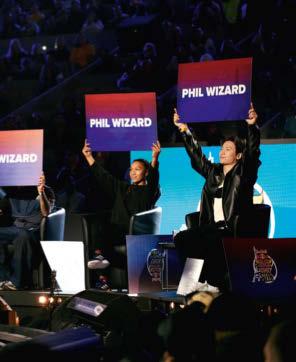
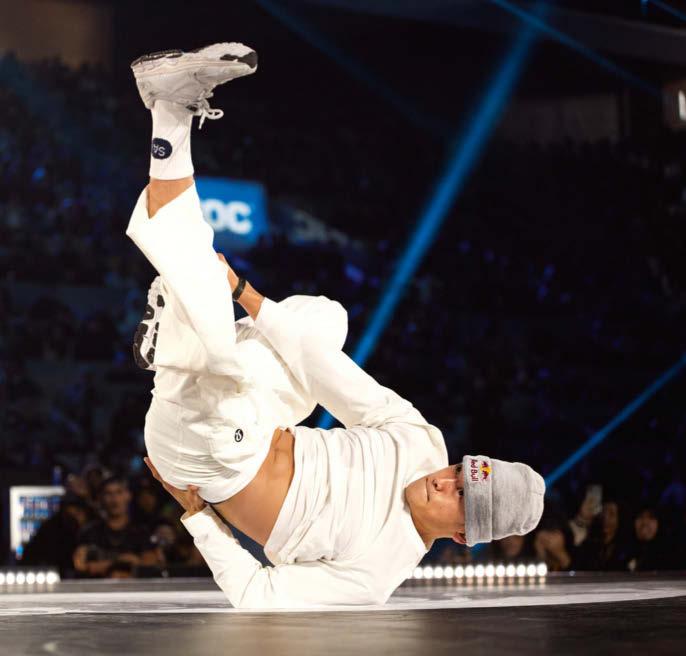


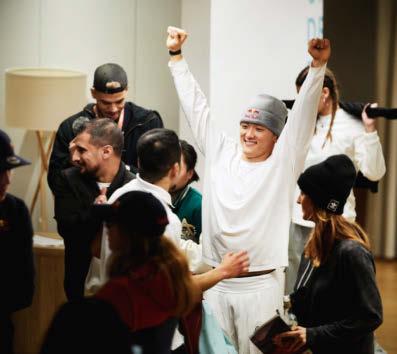


control. I try to be freer in the way that I dance and compete now.”
As he shares this, the cab pulls to a halt in the city’s Montparnasse neighbourhood. Wizard waves goodbye for the day, jumps out and enters his hotel. As the official base for competing B-boys and B-girls, the hotel’s upscale lobby is abuzz with breakers, a membersonly club for the truly gifted and agile.
Self-doubt may have got the better of Wizard at the BC One World Final four years earlier, but he has returned to Paris at the top of his game. In 2023 alone, he notched up four wins on the circuit, and life now involves running with a pack of elite breakers who ping-pong around the globe, competing at events as far afield as South Korea, Brazil, Portugal and Birmingham. For the past year, Wizard has barely spent longer than a week back home in Vancouver, and when he is there he stays off-grid, deleting his socials. “It’s my time to shut down, chill and sleep,” Wizard explains. “Honestly, I’m not a very fun person when I’m at home. I do all the exciting stuff, like cool content shoots, competing and seeing friends, when I’m on the road.”
The next day, Wizard, his girlfriend and a small Canadian entourage head
“I think that the Olympics will help grow breaking”
to Le Centquatre, a 19th-century funeral parlour that’s been transformed into a finger-on-the-pulse contemporary arts hub. This cavernous building, once grimly known as the “factory of grief”, will be a camp for breakers during the lead-up to the BC One World Final. Today, there’s not a hint of the macabre, only an atmosphere of tense anticipation as a couple of hundred people file into the main studio, hoping to see history made before their very eyes.
Wizard and his posse grab a row of seats and kick back to enjoy the battles playing out in the cypher as breakers contort themselves into gravity-defying shapes to old-school beats pulsating from the DJ’s turntables. Within this cosmos, surrounded by the top-flight breaking community, the Canadian looks perfectly at ease. He switches from celebrity one
moment – his smiling face frequently flashes up on screens around the venue – to hardcore fan the next, leaping from his seat whenever he witnesses a particularly skilful move, and often recording it on his phone to post later on his socials alongside rapturous praise about his fellow B-boys and B-girls.
Breaking is a supportive and tight-knit community, for sure, but touch on the subject of it becoming an Olympic sport at this year’s Games in Paris and things become a little divisive. The fear among breaking purists is that the practice, which originated as a creative outlet for New York’s marginalised youth, many of them Black or Hispanic, now runs the risk of becoming severed from its countercultural roots.
This is certainly a crossroads moment for breaking, but Wizard sees its inclusion in the Olympics as a mostly positive development. “Of course, things will change and it’s uncomfortable for people, as change is always unsettling,” he says. “In a way, you can already feel it now with a more competitive atmosphere, the seriousness of the events, and more sponsors coming in. But I don’t think it’s all bad. Ultimately, I think the Olympics will help grow breaking and put it on a platform that introduces it to new people who might not have otherwise had access. Sure, there’s now the ‘sport’ route, but there’s also still a culture. The underground scene will always be there: you can always throw a jam and people will turn up.”
Although steadfast in his opinion that breaking is first and foremost an art form, Wizard notes that long before the International Olympic Committee announced, in December 2020, that it would feature at the next Games, he’d already seen a shift in focus within the community towards the athletic component. “I’ll train for around 20 to 25 hours a week when I’m at home, running my moves,” he says. “Breaking is still so young that people didn’t really used to think about longevity, but I’m part of a younger generation that wants to take care of their bodies so we can do this for longer. Having said that, my diet is still basically just pastries.”
It’s not only breaking that has been going through an identity crisis of late: Wizard himself admits to having experienced a conflict of emotions ever since his lifetime ambition of becoming

IN GOOD SHAPE
By shedding expectations and simply enjoying the moment, the B-boy now feels freer and more able to express himself when competing

a member of the Red Bull BC One All Stars was realised 18 months ago.
“I was quite lost for a while because that had always been the pinnacle I’d aimed for,” he says. “Winning BC One or the Olympics… sure, these are great opportunities, but I’ve never cared about them in the same way as being an All Star.” When it finally happened, he lived off the high for roughly a year, before crashing back down to earth. “I had a feeling of, ‘I’ve done everything I want to do career-wise. What’s next?’”
Wizard’s answer was to scrap strategising altogether, instead leaning further into his innate creativity. “Yeah, competitively I’m now at a high level, but I’m nowhere near where I want to be artistically. When I watch myself, I see flaws and moments when I get locked up. It’s now about pushing my craft, developing a sense of freedom, and extending my vocabulary to find new movements. It’s the realisation that I’m not there yet, that there’s still work to be done.”
More than anything, Wizard wants to enjoy the process and feel upbeat coming out of every round. “It’s an impossible goal,” he admits, laughing.
“But that’s why it keeps me motivated. I’m striving for it while knowing that, on another level, it will never happen.”
Shortly after, under the glare of the spotlights at Stade Roland-Garros, Paris’ vast tennis arena, Wizard gets the opportunity to road-test his new mindset before the crowd of 8,000 eager spectators. Following an intense four hours during which 16 B-boys and 16 B-girls squared off, the Canadian has made it to the competition’s final round, stepping into the hallowed circle to compete against his old friend Hong 10, an unbreakable South Korean breaker famed for his relentless stamina.
As the showdown plays out, what’s really striking – aside from the impressive head spins, freeze poses and precision
“I wanted to show that it’s all love, even on the biggest stage”
footwork from both dancers – is seeing Wizard having such a blast. He marvels at his opponent’s slick moves, cheers him on with more enthusiasm than the fans, embraces him between rounds, and then, somehow, even manages to look genuinely pleased when Hong 10 is ultimately announced as the winner.
“We’d said right from the beginning, ‘Let’s meet in the finals,’” explains Wizard. “I went into the battle just wanting to have fun and give a good performance for everyone watching. More than anything, I wanted to show that it’s all love, even on the biggest stage in the world.”
Hong 10 finishes the day by lifting the gleaming gold belt above his head, but Wizard has finally achieved what he once considered impossible: to let go and simply enjoy the ride. “I’d lost battles previously, not because of the opponent, but because I gave up on myself,” he reflects, long after the lights have dimmed and the crowds have headed home. Because it was never really about the competitor in front of him. The true battle was always an internal one, and in that sense Wizard is leaving Paris victorious. philwizard.com


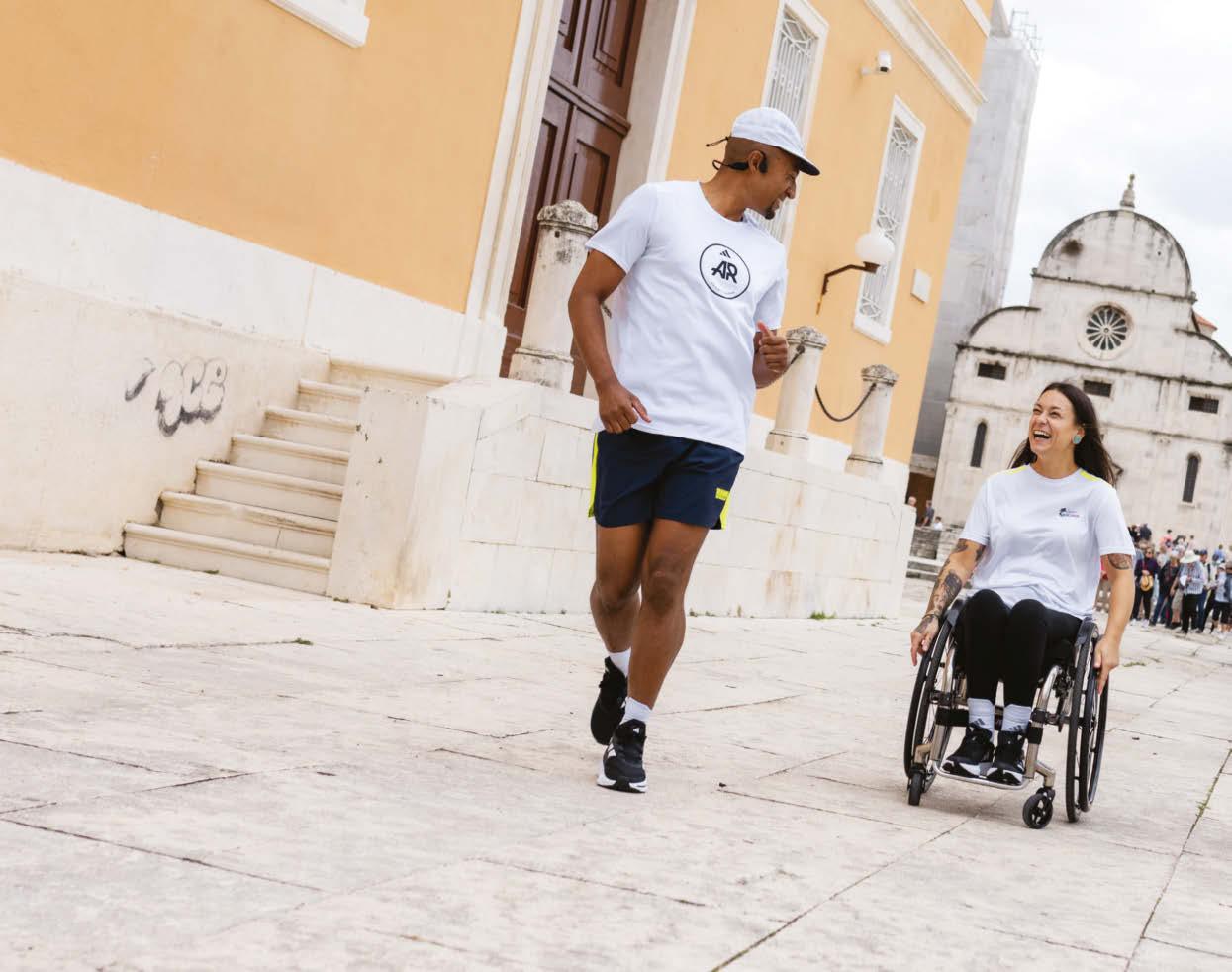
Global Sponsors of Wings for Life World Run

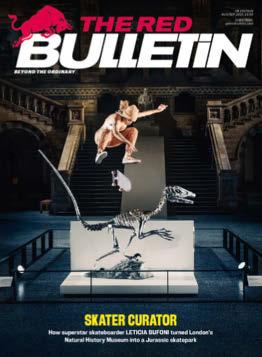






Enhance, equip, and experience your best life

STEEP IMPACT
Trail running in Annecy, France

“The down proves tougher than the up – the trail’s so steep that my leg muscles, working way too hard to stabilise the impact of heels on rock, creak with every step”
Navigating a labyrinth of legshredding, mentally taxing terrain through towering pine trees in the Col du Pré Vernet hiking area, I turn a corner to fnd a wall of white and pink granite blocking my path. Already at my limits, if I resort to my ‘big movers’ – my legs’ explosive, fast-twitch muscle fbres – to power up this literal staircase I’ll be cooked within minutes.
Up ahead, I can see my guide and teacher for the morning, professional ultrarunner Elsey Davis, tackling the ascent with the lightness and surefootedness of an alpine chamois, the 34-year-old taking lots of small bites rather than attempting it in one. I’m in at the deep end and nervous about trying to keep up. My trail-running escapades are limited to the UK’s more undulating terrain, and the sheer vertical ascent and descent of the Alps is hitting diferently. There’s also the small matter of a turned
ankle or tumble down the steep bank if I place a single foot wrong.
Taking care not to make big lunges, I inch my way upward into the verdant vegetation that cloaks the slopes of Mont Veyrier. The sapphire expanse of the 14.6km-long Lake Annecy and the city that shares its name is visible in small clearings 1,000m below, but its high-end hotels and pavement cafés might as well be on the Moon for all they mean to us right now.
I’m in this corner of eastern France’s Haute-Savoie region for a trail-running masterclass from a rising star of the sport. The of-road running discipline is booming in popularity, and Annecy is one of Europe’s hot spots thanks to direct access to a network of hundreds of kilometres of paths, and its seasonopening 42km race Trail de la Cochette.
You don’t need to be a mountain goat to get your endorphin fx in the region. There are plenty of easier lakeside paths along wooden jetties that skirt rather
Lake Annecy can be reached by train via Eurostar from London to Paris, then a direct, high-speed TGV service to Annecy. Switzerland’s Geneva Airport is also an hour’s drive away. Accommodation-wise, a lake-shore hotel, such as the Rivage Hotel & Spa, gives easy access to the wellwaymarked hiking and running trails that circle the lake and make forays up to the surrounding summits.


than scale the looming mountains; all that’s required to explore are trainers with an of-road tread.
For the professionals, though, the elevation provided by the area’s technical and steep trails is the perfect training ground for of-piste skills and ftness. It’s why Davis is here as part of The North Face’s athlete training camp, where she’s preparing for some of Europe’s biggest ultra-distance trail-running races.
An Olympic hopeful on the road with a marathon PB of 2:33:24, Davis only converted to trail running in 2021 after a series of injuries. But she was a natural, the fastest woman in the 2021 Eiger Ultra Trail (E35 category), 2022 Ultra Sierra Nevada (Maratón) and 2023 Nice Côte d’Azur by UTMB (Roublon-Nice 100K).
In January last year, Davis also broke the women’s record for a winter circuit of the Bob Graham Round – a punishing 106km route that challenges runners to traverse 42 fells in the Lake District,
Raising the game: Ray traverses a wooden pier on the shoreline of Lake Annecy
gaining almost the elevation of Mount Everest, in less than 24 hours.
Based in Cornwall, where she trains at home on a treadmill with a 40° gradient to mimic that of upcoming events, Davis emphasises the value of experience, running technique, and preparing your body and mind for all the unexpected drama of wild landscapes, which – as I’m fnding out – you can only get in the Alps.
The reward for my uphill slog is unveiled as the terrain levels out and the trees fall back to reveal a sun-washed plateau commanding an amazing view of the lake, its delicate waves sparkling like a milky galaxy of stars. We take a moment to drink in the scene, but not too long: we must start our descent before our legs cool down. Initially I’m looking forward to working with gravity, but the down proves tougher than the up – the trail’s so steep that my leg muscles, working way too hard to stabilise the impact of heels on rock, creak with every step.

Some of Davis’ advice rings in my ears: “Trail running is about fow – the more relaxed you are, the easier you will fow.”
Glancing ahead at her lead, it’s clear where I’m going wrong: my long, heavyfooted strides are sapping my energy
Elsey Davis’ tips on how to adapt your road-running technique for the trails
Shorten your stride
“When running steep downhills, it’s better to make your cadence higher and your stride length shorter so that you have more control over the ground and are less likely to slip. You should also look down the trail rather than at your feet so that you get advanced warning of obstacles.”
Drill on a hill
“I learnt this drill from trail runner Jon Albon: find a section of trail as steep as you can manage, then spend 10 minutes alternating between fast feet – meaning lots of footfalls but not moving along much, which helps train efficiency – and bounding, which is taking long steps but pausing after you land each foot. This trains you to be more stable.”
Fire up fat-burning
“I’ve been working with a nutritionist who’s recommended that I do two very slow, fasted runs a week, adding some coconut oil to a caffeinated drink beforehand. Your body metabolises the medium-chain fatty acids in the oil, which trains it to use fat [rather than carbohydrate stores] as fuel more readily.”
and making me less nimble, whereas she keeps her weight over her feet, tip-tapping down the mountain with minimal fuss.
Davis’ face lights up as we enter a long, technical stretch of descent and she moves like water, tumbling down the trail. She carries her momentum into a fatter, faster section with loose muscles and a mindset of relaxed focus, allowing her eyes to drift further along the trail. This forewarns Davis’ brain, which she trusts to log every minute detail of the path, leaving her free to smile as she fows through its sun-dappled beauty.
I follow her example. I can feel my leg muscles unbunching as the tension eases out of them. A grin breaks across my face as the trail spools away under my feet. I’ve fnally found my fow.
Matt Ray is an action sports and adventure journalist and photographer who has run trails from Verbier to the Lake District. He blogs at adventurefella. com; Instagram: @adventurefella

Your outdoor destination on Lake Maggiore!
Nature and adventure destination: 1,400 km of hiking trails, trail running, climbing, bouldering, cycling and lots of water fun! ...and not to mention the over 2,300 hours of sunshine a year.
www.ascona-locarno.com

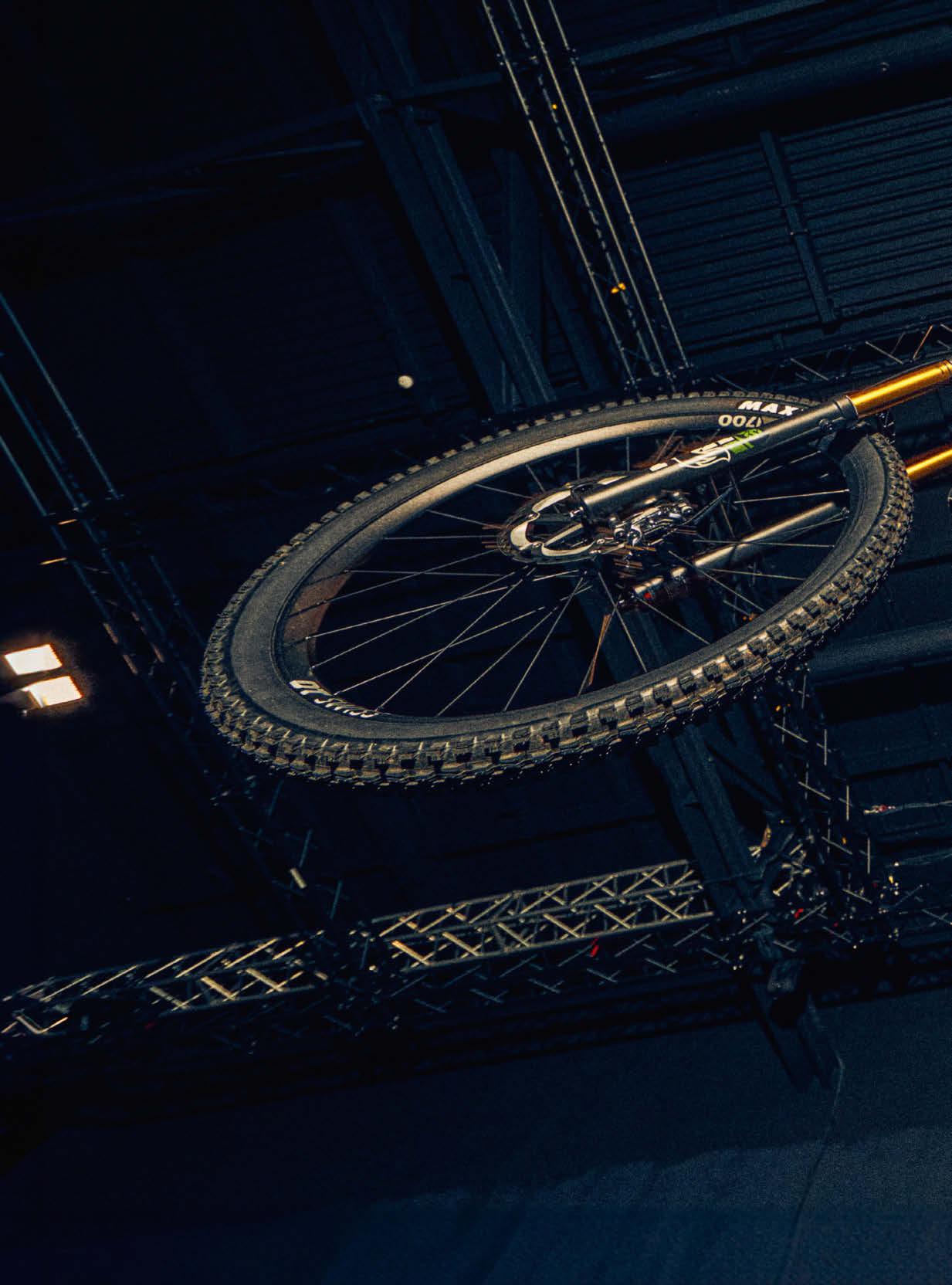
Conquer any terrain with this year’s most-wanted trail bikes and ridewear
 ABUS CliffHanger MIPS Helmet, mobil.abus.com; OAKLEY Encoder Strike Sunglasses, oakley.com; TROY LEE DESIGNS Ruckus 3/4 Sleeve Jersey and Ruckus Cargo Pants, troyleedesigns.com; TSG Slim Gloves, ridetsg.com; STANCE Franchise Crew Socks, stance.eu.com; RIDE CONCEPTS Hellion Shoes, rideconcepts.com; PIVOT Switchblade bike, pivotcycles.com
ABUS CliffHanger MIPS Helmet, mobil.abus.com; OAKLEY Encoder Strike Sunglasses, oakley.com; TROY LEE DESIGNS Ruckus 3/4 Sleeve Jersey and Ruckus Cargo Pants, troyleedesigns.com; TSG Slim Gloves, ridetsg.com; STANCE Franchise Crew Socks, stance.eu.com; RIDE CONCEPTS Hellion Shoes, rideconcepts.com; PIVOT Switchblade bike, pivotcycles.com
 SMITH Mainline MIPS Helmet and Rhythm MTB Goggles, smithoptics.com; THRUDARK Force Cadence MTB Jersey, thrudark.com; TSG Slim Gloves, ridetsg.com
SMITH Mainline MIPS Helmet and Rhythm MTB Goggles, smithoptics.com; THRUDARK Force Cadence MTB Jersey, thrudark.com; TSG Slim Gloves, ridetsg.com
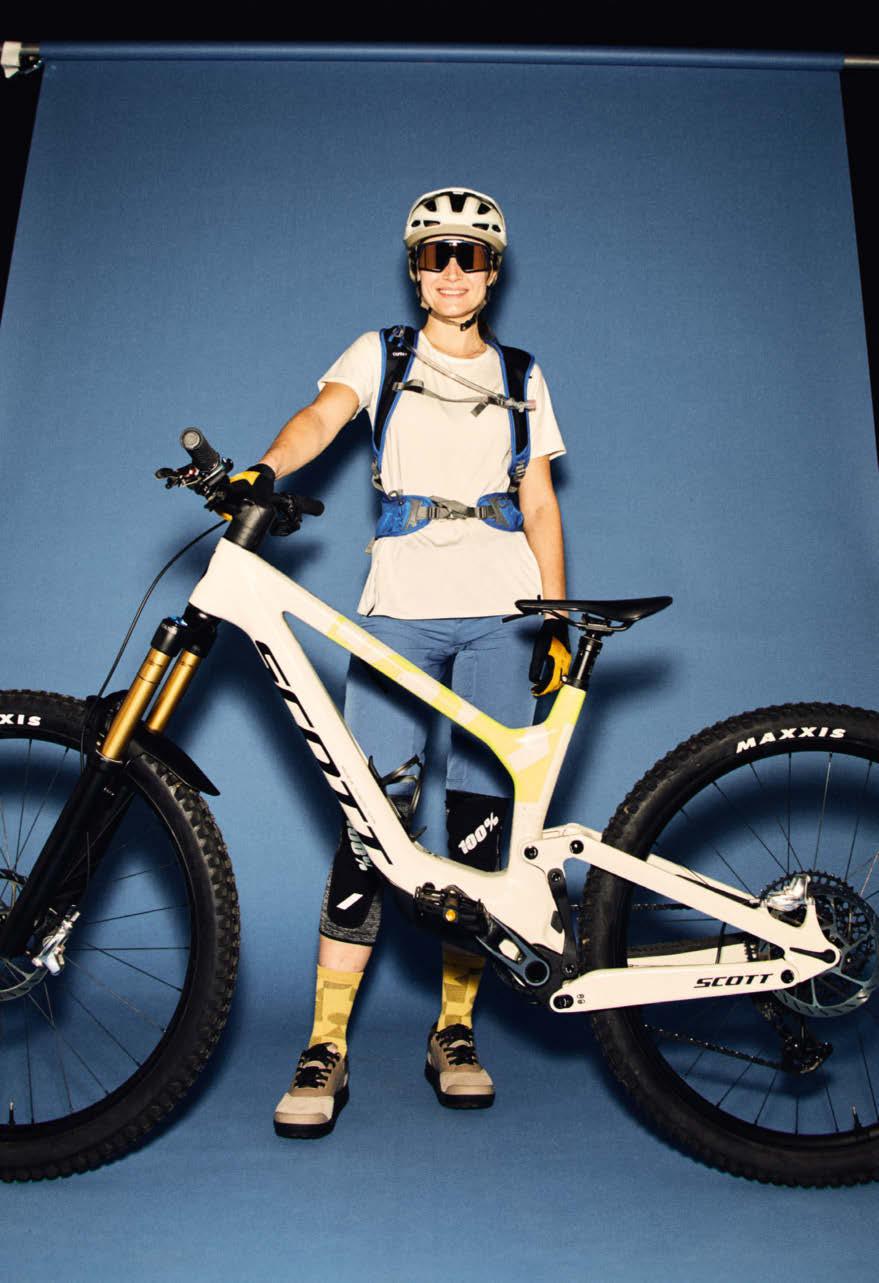



 Clockwise from top left: MARIN San Quentin 3, marinbikes.com; SPECIALIZED Status 160, specialized.com; YT INDUSTRIES Jeffsy Core 2, yt-industries.com; CUBE Stereo Hybrid One55, cube.eu
Clockwise from top left: MARIN San Quentin 3, marinbikes.com; SPECIALIZED Status 160, specialized.com; YT INDUSTRIES Jeffsy Core 2, yt-industries.com; CUBE Stereo Hybrid One55, cube.eu

Helmet, goggles, jersey and gloves, as page 78; THRUDARK Force Cadence MTB Shorts, thrudark.com; TSG Kneeguard Scout, ridetsg.com; STANCE Crops Crew Socks, stance.eu.com; RIDE CONCEPTS Accomplice Shoes, rideconcepts.com; TRANSITION Patrol GX Carbon bike, transitionbikes.com; MTB HOPPER Lite Ramp, brink.uk
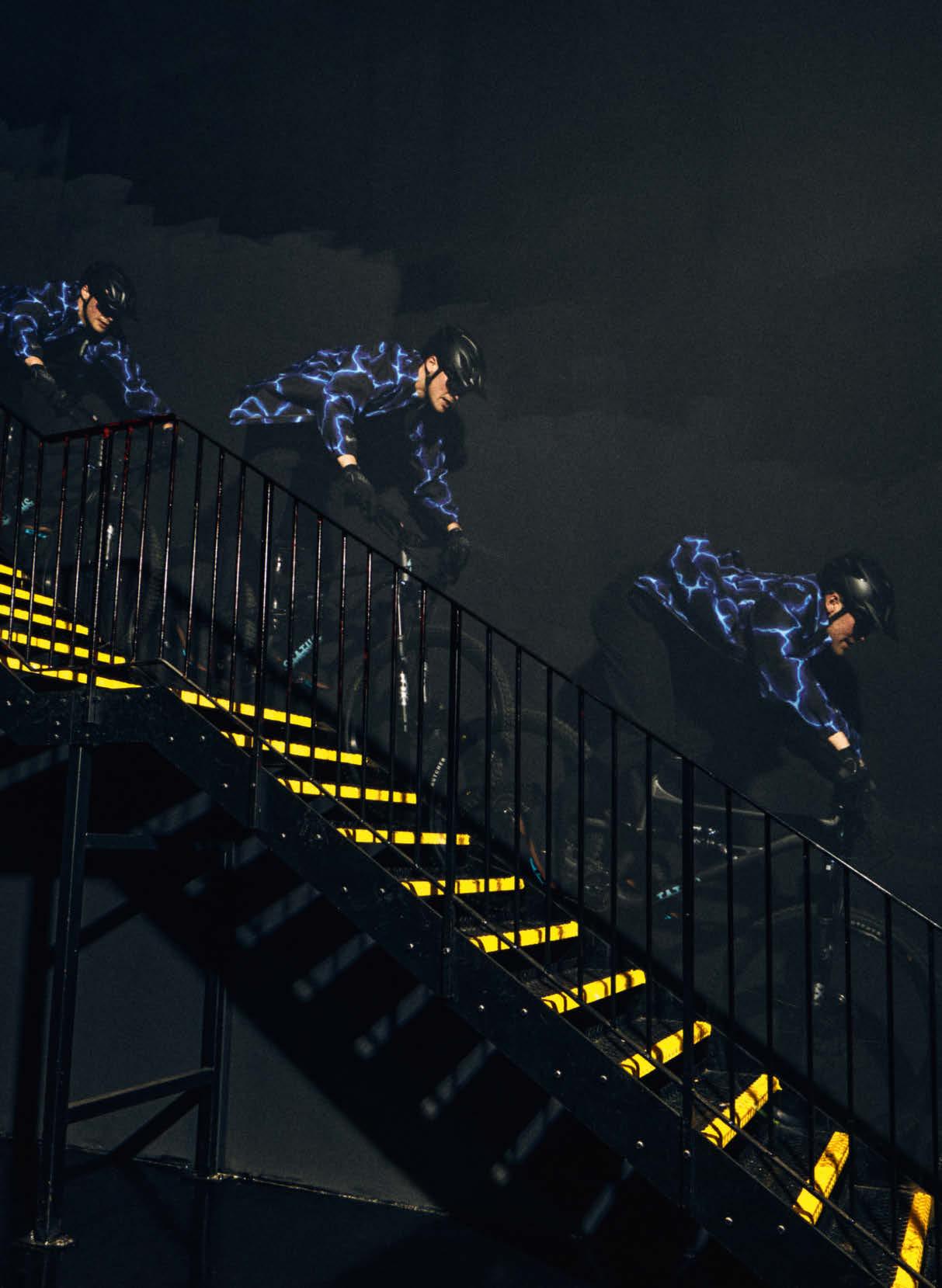
TROY LEE DESIGNS
A3 Helmet and Air Gloves, troyleedesigns.com;
MESSYWEEKEND MW Speed Sunglasses; messyweekend.co.uk;
VOLCOM T Spinks Gore-Tex Jacket, Volcom Stone T-shirt and Trail Ripper Pants, volcom.co.uk; 100% Advocate Performance Socks, 100percent.com;
CRANKBROTHERS Stamp Street Shoes, crankbrothers.com;
SPECIALIZED Status 160 bike, specialized.com


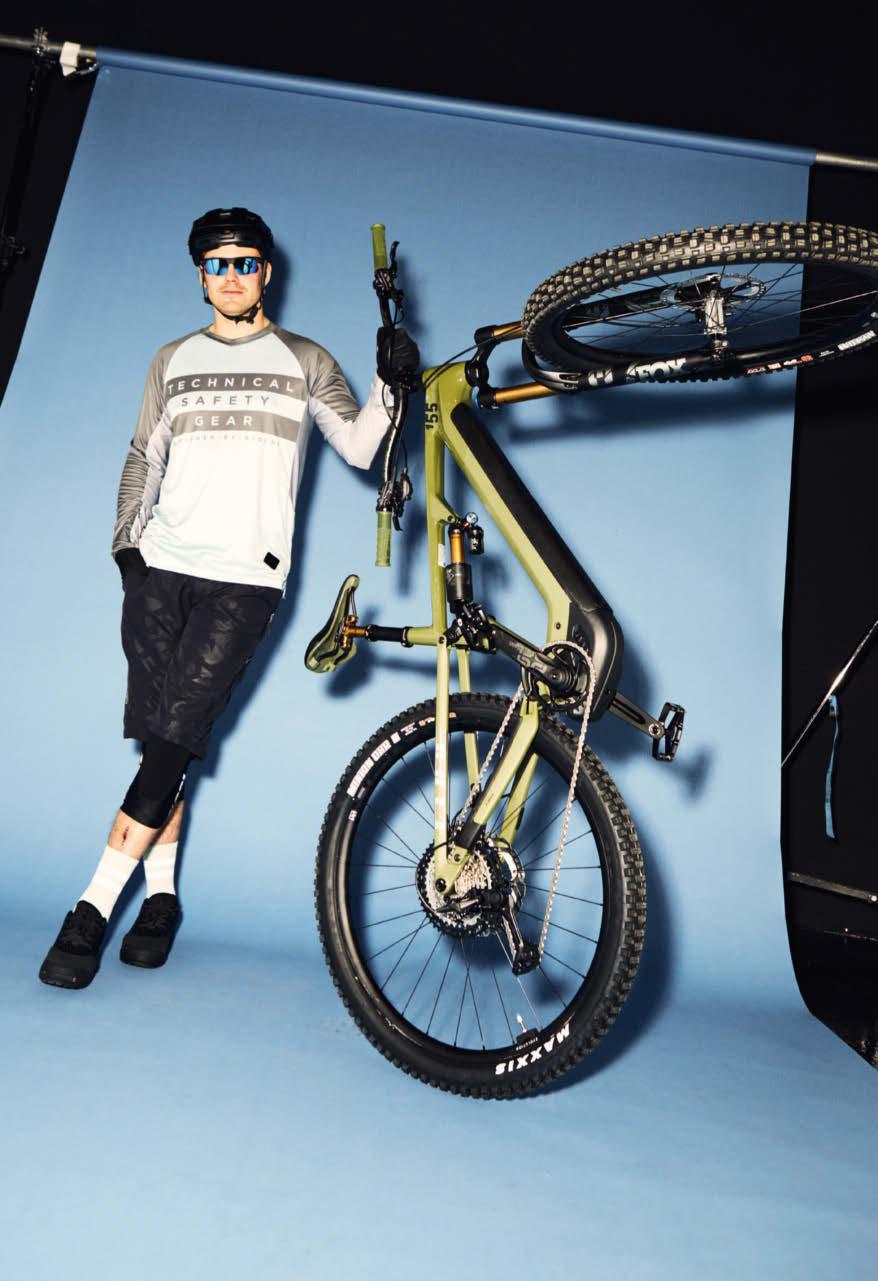

 BLUEGRASS Vanguard Core MTB Helmet, met-helmets.com; AVAIL Johansson MTB Goggles, availoptics.com; 100% Airmatic Jersey, 100percent.com
Models
FRANCIE ARTHUR, JAKE YOUNG Location THE TANK FACTORY, thetankfactory.co.uk
BLUEGRASS Vanguard Core MTB Helmet, met-helmets.com; AVAIL Johansson MTB Goggles, availoptics.com; 100% Airmatic Jersey, 100percent.com
Models
FRANCIE ARTHUR, JAKE YOUNG Location THE TANK FACTORY, thetankfactory.co.uk
Dr Joseph Dituri is in a league of his own – quite literally. Last June, the then 55-yearold emerged from a lagoon in Key Largo, Florida, and felt the sun on his body for the frst time in nearly four months. The retired US Navy diver had set a world record for underwater living, spending 100 consecutive days in a scuba-diving lodge 9m below the lagoon’s surface.
The natural atmospheric pressure in Jules’ Undersea Lodge caused the man they call ‘Dr Deep Sea’ to shrink by almost a centimetre and a half, lowered his cholesterol, and improved his sleep. He took part in the Project Neptune 100 experiment to conduct biomedical research into the efects of living in a highpressure environment, which he believes could beneft the treatment of brain injuries or even help us live longer.
Dr Dituri was inspired by a 2012 trip to the bottom of the Pacifc Ocean by flmmaker James Cameron. During his 11km dive, the Aliens and Avatar director encountered a 28cm-long amphipod – a ‘sea louse’ that in shallower waters measures little more than a millimetre. What’s more, its tissue contains a chemical that’s already in testing for the treatment of Alzheimer’s.
This was Dr Dituri’s eureka moment: “I go, ‘Wait, we have the cure at the bottom of the Mariana Trench. We need to go live in the ocean.’ And everybody’s like, ‘He’s lost it!’
But I think living underwater is the next great thing. Within fve, 10 years we’ll be starting colonies and moving to explore further underwater.”
With UK tech research frm DEEP planning to establish a permanent human presence underwater at its base in Gloucestershire by 2027, his predictions may be even closer to becoming reality.
But before you swap your landlord for what we presume
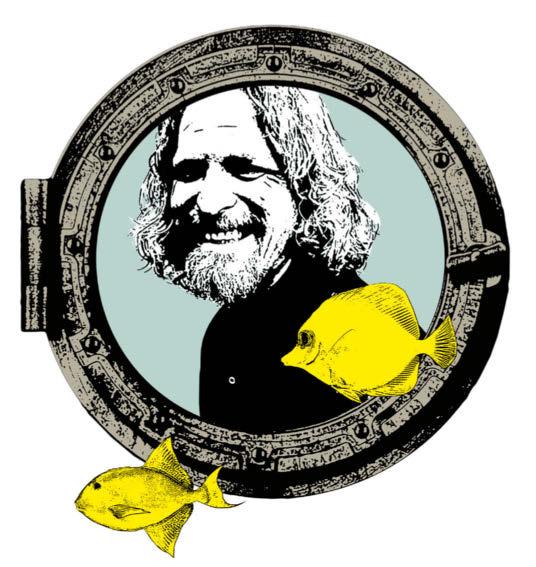
Are you ready to inhabit the ocean’s depths? This former US Navy diver believes it’s “the next great thing” for the human race. Here are his tips on taking the plunge…
will be a ‘sealord’, here’s what you need to know…
The frst thing you’ll notice at depth is that it’s dark outside. “The lack of sun exposure was a problem,” says Dr Dituri, “as the sun sets your body clock.
I took 2,000 IU of vitamin D [a day] because I needed it, but that was my only supplement.” Another drawback of living underwater is that you can’t just nip out for a run, or even a swim. Dr Dituri’s advice is to learn from the residents of the International Space Station and bring the most lightweight, space-saving piece of gym kit possible: the resistance band. “I didn’t lose any muscle mass [while] down there,” he says.
When it comes to food, there’s good news and bad news.
The high-oxygen environment
the safest method of cooking. Not a problem for Dr Dituri, who ate “four eggs every morning, with cheese and meat on top”. It’s not a total gastronomic disaster down there, though: one of his experiments suggested that growing salad underwater is more efcient. “We had a grow-of with a local sixthgrade class, using grow lamps,” he says. “We beat them because we had more carbon dioxide in our environment.” But remember to pack a pair of Marigolds: “It’s a warm, dark, moist environment – perfect for bacteria growth.”
lifts your body’s metabolism, so efectively you can eat as much as you like: “I ate about one-and-a-half times the calories I eat on the surface,” says the doctor. The catch? Prepare for bland eating –the highly explosive oxygen in the air makes a microwave

“Within 10 years we’ll have colonies underwater”
Dr Joseph Dituri, deep-sea expert
Living underwater won’t mean shunning the land completely, says Dr Dituri. “We’d still be commuting, not to the surface but back to the shallows to get stuf, because logistically it’s very hard.” During his mission, the doctor could easily get resupplies –“If I forgot a medicine, they could ship it down to me, and they washed my clothes once a week” – but on day 12, something occurred that even he and his 13-strong medical team couldn’t have foreseen: he cracked a tooth on a popcorn kernel. “It was excruciating pain, but we couldn’t do anything because of a condition known as barodontalgia. If you seal the tooth while down there, it’ll expand and blow up, basically, when you come up.”
What’s that you say? Aquatic living is your dream and you’re thinking of starting a family there? Well, know this frst: “Because of the increased pressure, ejaculate would most likely not go very far,” Dr Dituri says, “so you probably wouldn’t be able to reproduce.” That’s something to bear in mind should the future of our species ever depend on you… drdeepsea.com
Trail conditions are unpredictable, so Merrell’s latest Matryx Pack releases are designed to adapt every step of the way

Whisper it, but road running can be a drag. Jogging the same loop on the same streets gets stale.
Even if you venture off your regular routes, it’s hard to escape the repetition of plodding along.
There’s a solution: trail running. Taking your training off-road can revitalise your running, making each session far from predictable: paths change underfoot depending on conditions, obstacles create challenges to overcome, and the focus is switched from speed to immersing yourself in the experience.
Same is boring – it’s the ethos behind the rallying cry of Merrell, the trail-running expert with 40 years of experience in heading into the unknown. This dirt-covered DNA is distilled into all of its elite-level trailrunning shoes at the Merrell Test Lab (MTL). Combining cutting-edge product design, innovative materials and technologies, and thousands of hours of testing by athletes, if a shoe has the MTL seal of approval, you
know it can handle anything you throw at it – from local woodland loops to the technical trails of the Skyrunner World Series.
The new MTL Matryx Pack is a prime example. The updated MTL Long Sky 2 and MTL Skyfire 2 feature Merrell’s new Matryx upper – a single piece of lightweight and

breathable material that includes Kevlar for extra durability.
Combined with the temperatureregulating footbed cover and tongue lining, the refined approach keeps your feet cool in the heat of the moment, but can also dry quickly if submerged in an unplanned river crossing.
For the MTL Skyfire 2, the FloatPro Foam midsole and race-focused fibreglass FlexPlate add spring to each foot strike on shorter, competitive runs, while the IPSO award-winning MTL Long Sky 2 stays comfortable deep into off-piste exploring. Both feature Vibram’s MegaGrip outsole, its 5mm lugs ensuring you stay gripped on any terrain.
Vegan-friendly and featuring a smattering of recycled materials throughout, the MTL Matryx Pack is at the forefront of trail running and leaves identikit alternatives in its wake. Find out more at merrell.com
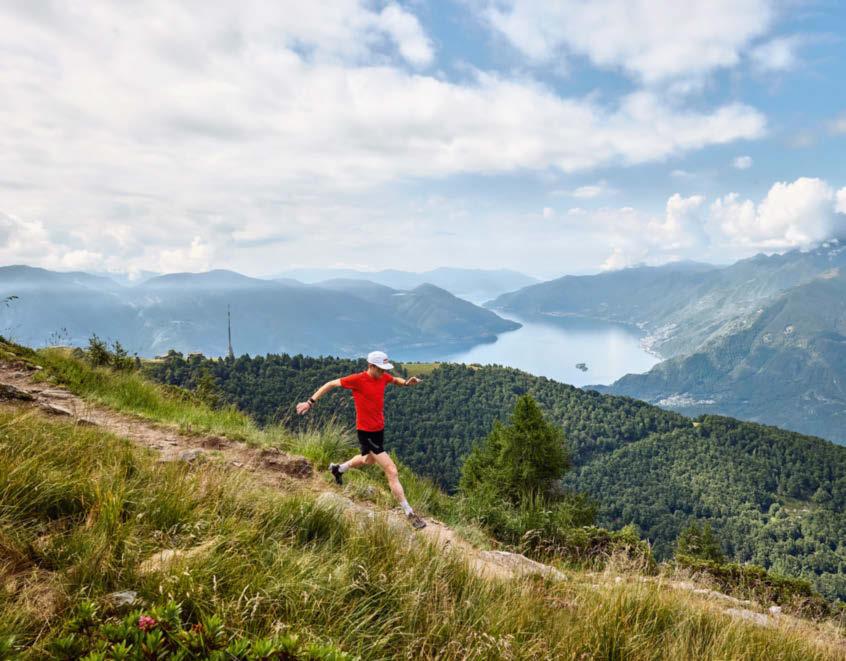
Swiss sky runner Rémi Bonnet provides a guided tour of his favourite off-road trail – a 10km taster of the Via Alta Vallemaggia in the canton of Ticino
Switzerland’s southernmost canton, Ticino, is the perfect destination for trail runners. Its mix of forests, ridges and rugged mountains offers ever-changing landscapes, while an extensive, 1,400km (870-mile) network of paths ensures a wide variety of challenges, whatever your abilities. The jewel in the canton’s crown is the Ascona-Locarno region. Located on the Italian border, its perfectly maintained trails ferry you past mountain lakes, waterfalls, and traditional mountain villages with rustic-style stone houses. And wherever you are on the narrow ridges of the area, you’ll feel the quiet presence of Lake
Maggiore, its shoreline the backdrop to any adventure.
The trail between Cimetta and the mountain hut at Alpe Nimi is my personal favourite. A challenging three-hour route featuring exposed sections of via ferrata that require scrambling skills, it samples the first 10km of the Via Alta Vallemaggia (VAVM) – a 200km loop that takes in ridges and peaks, as well as views across the Basòdino Glacier, as it traverses the mountains that flank either side of the Vallemaggia from Cimetta to Ponte Brolla. A microcosm of what’s to come, it’s a good test of whether you have the mental strength needed to tackle the entire VAVM.
Setting off from Muralto, 200m above the lapping waters of Lake

Bern
SWITZERLAND
The lakeside town of Locarno is a two-hour transfer from Milan’s airports or can be reached directly by train from Zurich, Basel or Lucerne if travelling from Switzerland
Locarno Ticino STEFAN KUERZI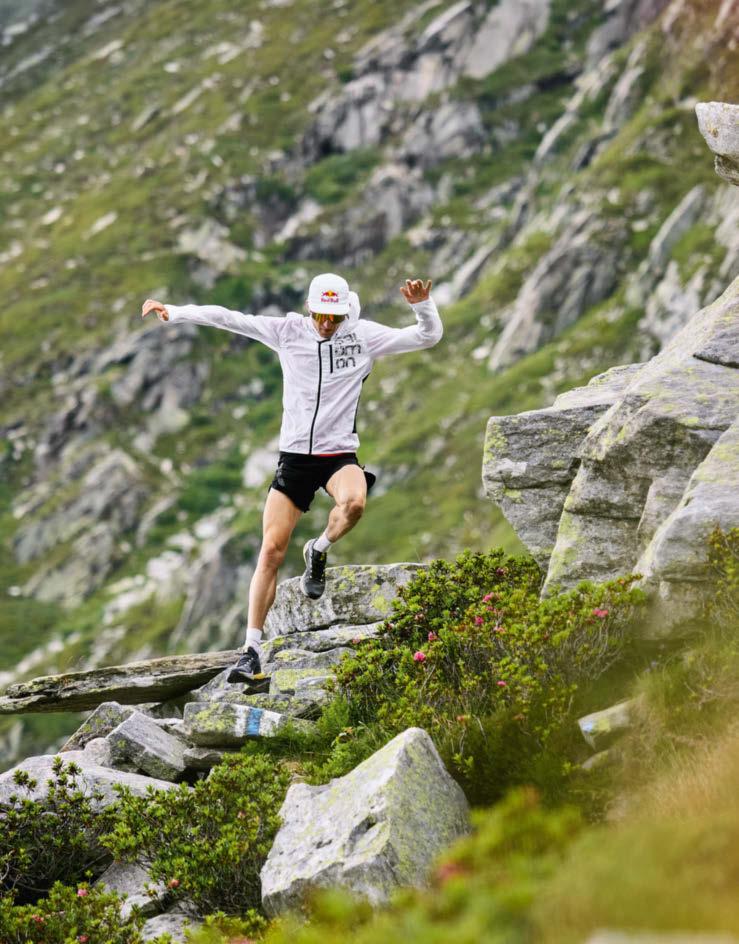
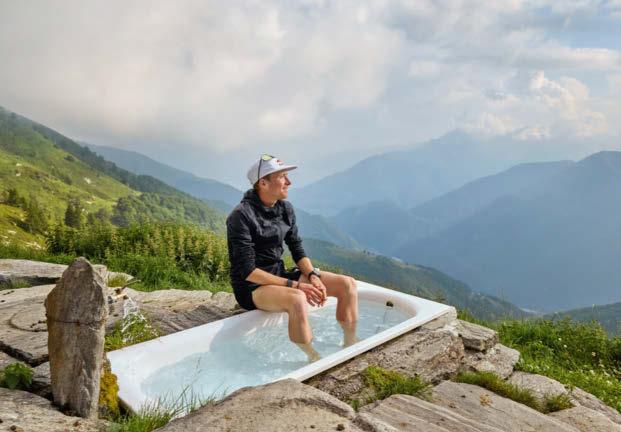
Maggiore, the first stop is the Cardada-Cimetta cable car. While it’s possible to reach the trail head on foot, the gondola fast-forwards over the forests and meadows, getting you up to the summit station at Cardada (1,646m) in a matter of minutes – and saving your legs for what lies ahead.
After drinking in the panorama across southern Switzerland’s largest lake from Cimetta’s viewpoint, it’s time to say goodbye to the tree line as you head up over the peaks and troughs of the ridge between two valleys: Vallemaggia and Valle Verzasca. There’s a T4-graded (alpine walking) path marked with blue dots, but you must still keep your wits about you and be sure to watch your step.
Heading north, the trail passes the Cima della Trosa (1,869m) and the viewpoint at Madone – one of the lower peaks of the Lepontine Alps. Continuing on the south-west flank of the Pizzo d’Orgnana and the route’s highest point (2,218m), a north-western trail via the Passo di Nimi and Cima di Nimi ferries you to the Alpe Nimi and the mountain hut that marks the route’s end.
Built in 1742 on an alpine pasture, the guest house sleeps 18 people, but it’s worth reserving a spot (€32 per night) – particularly in summer. As well as a bed for the night to rest your aching muscles, you’re guaranteed a warm welcome from the hosts, who will serve up a well-earned aperitif with goat’s cheese, marinated peppers and crispy bread, followed by a homemade dinner of gnocchi, desserts and cake. And all with views of a glistening Lake Maggiore to the south and the Monte Rosa massif to the west on a clear day.
Although you won’t want to leave this elevated paradise, your return to civilisation requires a four-hour downhill hike to Gordevio in the valley below – where you can hop on a bus to Locarno – or alternatively you can retrace your steps back to Cardada. On either route, you’ll be sure to see some mountain goats – the master mountaineers showing you how it’s done by the experts in the heart of the Alps.
Find out more at ascona-locarno.com
Time to cut the cord on those old, bogstandard earphones. Soundtrack your next workout session with a pair of these fitnessfocused alternatives
PUSH ACTIVE
Got a song that gets you in the zone for a big lift? The Skull-iQ tech in these true wireless earbuds enables you to queue your favourite hit using voice control, so you won’t need to break your fow to line up that all-important power ballad. skullcandy.co.uk

AEROFIT PRO
Exercising shouldn’t mean settling for sub-par sounds. The AeroFit Pros’ oversized drivers pack an mighty punch that’ll have audiophiles nodding in approval, and their detail-rich delivery will keep you immersed in your music or podcast. soundcore.com
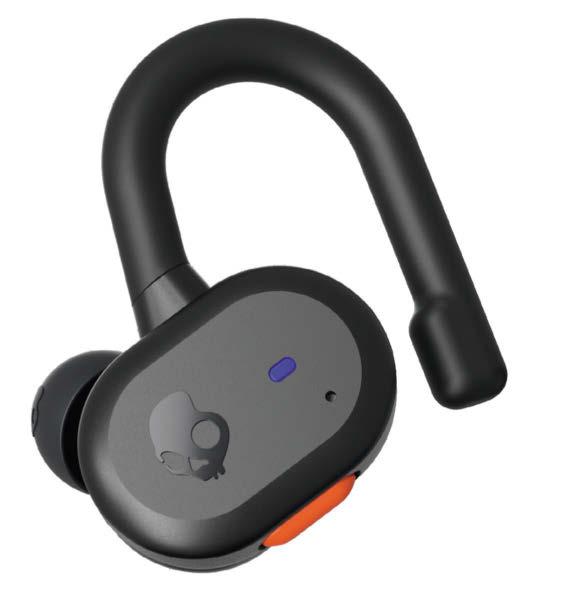
Great find: Skullcandy’s Push Active buds feature Tile technology, allowing you to locate them – via Bluetooth and an app –if lost or misplaced
SHOKZ OPENFIT
It’s important not to shut out the wider world when training outdoors – particularly if you’re sharing space with other runners, riders or vehicles. These buds keep you attuned to your surroundings thanks to an open-ear design that leaves your inner ear free to hear nearby noises while your playlists are served up in crystal-clear audio. Finished with a comfortable silicone cushion and ergonomic ear hook, the only reason you’ll take them of is for charging. shokz.com

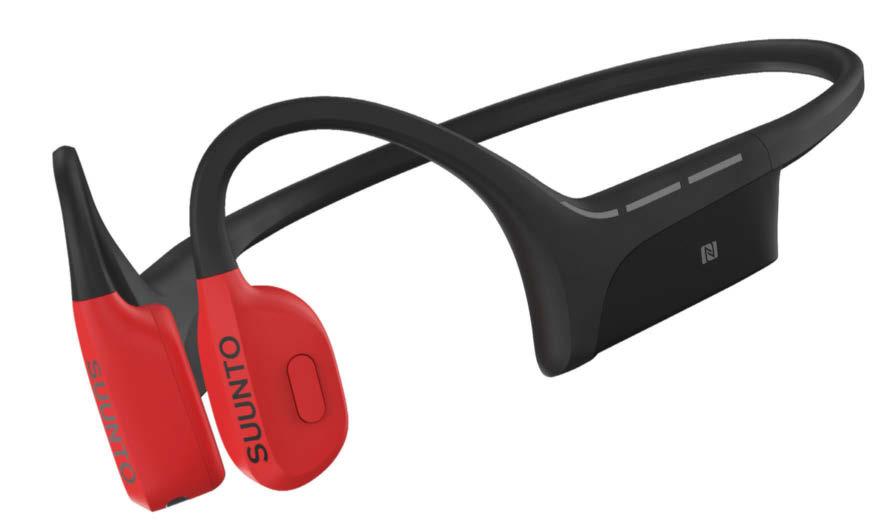
Bypass your outer ears entirely with a pair of bone-conducting headphones from sports-watch specialists Suunto. Rather than transmitting sound waves through the air between speaker and ear, these send audio vibrations through your jaw and into small bones in your inner ear, where they’re interpreted by your brain. The result is a listening experience that blends your soundtrack with that of your surroundings. Dust- and waterproof, the Wing headset also has LEDs on both sides to help you stay visible if adventuring after dark.

30 minutes

slipping out, or the pain of earache. With three sizes of ear adapter and four diferent fns, Sennheiser’s Sport buds allow you to get that just-right Goldilocks ft, ensuring you can focus solely on the matter at hand – like outrunning three angry bears… sennheiser-hearing.com
When you’re already feeling drained and in need of extra motivation, a fat battery in your earbuds can be the death of your workout. JBL has a solution. Its latest Endurance Peaks combine 50 hours of battery life in the buds and their charging case, almost guaranteeing you’ll never arrive at the gym without beat-based back-up. And if they do somehow run out of juice, a 10-minute charge gives you an hour of playback, getting you up and running in no time. jbl.com
Immersive audio: JBL’s Endurance Peak 3 buds have an IP68 dust- and waterproof rating and can withstand depths of 1.5m for up to
Olympic gold medal-winner Kjeld Nuis has reached 93kph on skates. But, to secure his biggest wins, the 34-year-old Dutchman had to get up to speed mentally, too

“As a kid, I was fascinated by the movement of the skaters,” says speed skater Kjeld Nuis, a middle-distance specialist who won gold medals over 1000m and 1500m at the 2018 Pyeongchang Winter Olympics and retained the latter title at Beijing 2022. “I was this little toddler with his hands on his back, moving from one leg to the other. My dad bought me a little pair of four-blade skates and that’s where it all started. Even now I’ve won big races, I still want to improve myself every day. When you have a gold medal around your neck, you feel hunted. You want to do everything to keep getting better.
“I started late with bringing the mental side of things into my training. In big moments
I didn’t have my mind under control – I was nervous, scared of being nervous, and a bit ashamed of those feelings going around in my head. In 2014, the year of the Sochi Olympics, I got the fu two weeks before qualifcation.
I had a big fever, I was in bed, and I lost all my confdence. Even during the race, with every push I was thinking, ‘Is this enough?’ I fnished 0.04 seconds too slow. That was the worst feeling of my career.
I think that if I’d been better mentally I would have qualifed.
“Two years before [the 2018 Pyeongchang Games] I began working with a mental coach. It was a bit taboo back then, as no one on my team had one. But after the frst session
“When you have a gold medal around your neck, you feel hunted”
Kjeld Nuis, Olympic speed skater
I came home with so much energy. I never talked about my feelings in normal life; I always thought, ‘Just act cool and it will all go away.’ But that’s not how it works. When I started opening up and accepting those feelings, that was 50 per cent of it for me. It’s not about acting confdent; it’s about keeping it really simple and focusing on the things you can control.
“At Pyeongchang, I won the 1500m, but I didn’t celebrate, because I needed to win the 1000m [race] 11 days later. I [began with] a false start, and the whole stadium gasped. I found myself thinking, ‘When I wasn’t mentally prepared, I would really suck right now.’ But now the only thing I was saying to myself was, ‘That didn’t happen. Just go back and do it again.’ And then I had what is still the best frst 200m of my life – I did it in 16.3 seconds! [That win] was the best moment of my career. And it was all about being mentally ready for that race.”

“The MAC approach is a technique we can all adopt to help enhance our daily performance and wellbeing,” says York-Peter Kloppel (pictured), head of mental performance at the Red Bull Athlete Performance Center in Thalgau, Austria. “It stands for mindfulness, acceptance, commitment. Start by acknowledging and labelling your emotions. This can be challenging: how do I feel – angry, frustrated or disappointed?”
“Next, accept the emotion and understand where it came from. Before an exam, try to work out why you’re nervous. Do you need to study more? Is it because you don’t know what to bring? Find a way to improve the situation.”
“To commit means to take action. This doesn’t have to be working with a coach or mentor. Find someone you trust to share your emotions with, and give that emotion time and space. Sharing is a really easy and powerful action, but it’s just one option –look for other ways to work on that emotion, too.”
Scan the QR code to hear the Mind Set Win Podcast
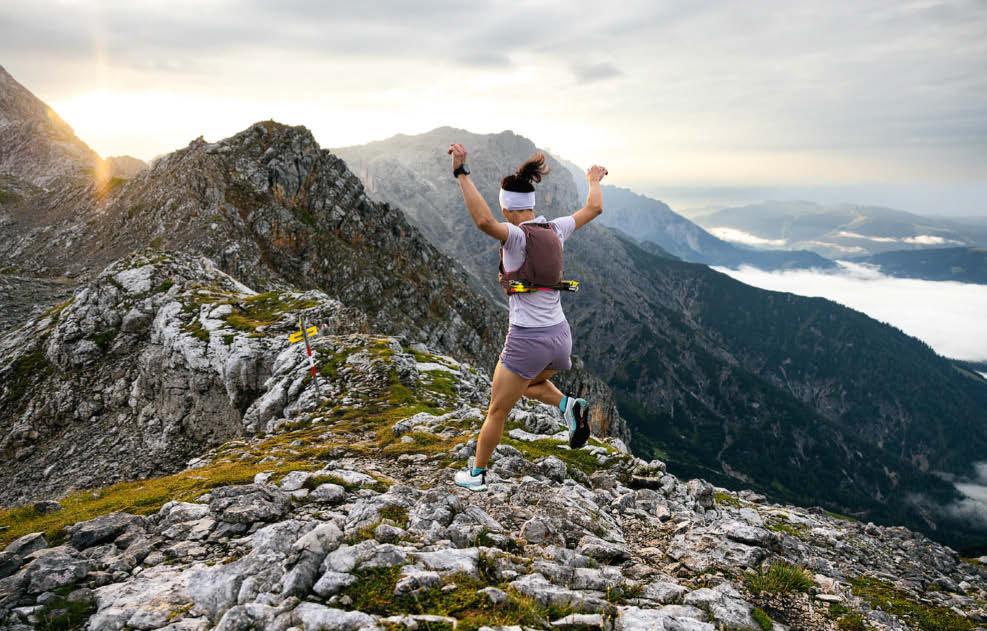
Seamlessly carry all your essentials with deuter’s new Traick trail-running vest
Trail running has exploded in popularity in recent years, and it’s easy to see why. Rather than pounding the pavement, the off-road-orientated style of running sees you head into the wild and immerse yourself in the outdoors as you chase environment-induced endorphins rather than PBs.
It does, however, require slightly more kit than a road run. Carrying water and food supplies is essential when exploring off-piste and the nearest refuelling stop is many miles away, while the testing, technical and exposed nature of some trails requires the use of hiking poles and even extra layers of clothing.
Fortunately, German backpack specialist deuter has a solution that lets you keep all your trail-running gear close to hand mid-adventure: the Traick trail-running vest. With its compact, seamless design, the Traick combines the lightweight stature of a hydration vest with the capacity and carrying credentials of a small backpack.
Climate partner and bluesign certified, it’s constructed from a breathable stretch fabric, providing a garment-like feel that won’t cause you to overheat, regardless of your running intensity. It also has a fine-tunable bungee sternum closure system and adjustable compressive cords at the sides, which combine to offer a tailored, bodyhugging fit with zero bounce – key when fully loaded and tackling trails at speed.
This would count for nothing if it couldn’t hold more than a couple of soft

bottles. Each shoulder strap has four pockets (two zipped) for onthe-go access to energy bars, bank cards and your phone (for all those mid-run photos). At the rear, the vest has stash pockets for a jacket, while the main compartment is great for extra layers or an additional hydration bladder. What’s more, there are numerous external loops where you can secure a set of collapsible poles. Available in either 5L or 9L capacity, and three different sizes per capacity – from XS to M for women, and S to L for men – the Traick will help you stay on track, regardless of distance, and keep the most ambitious trail runners from breaking stride. Find out more at deuter.com

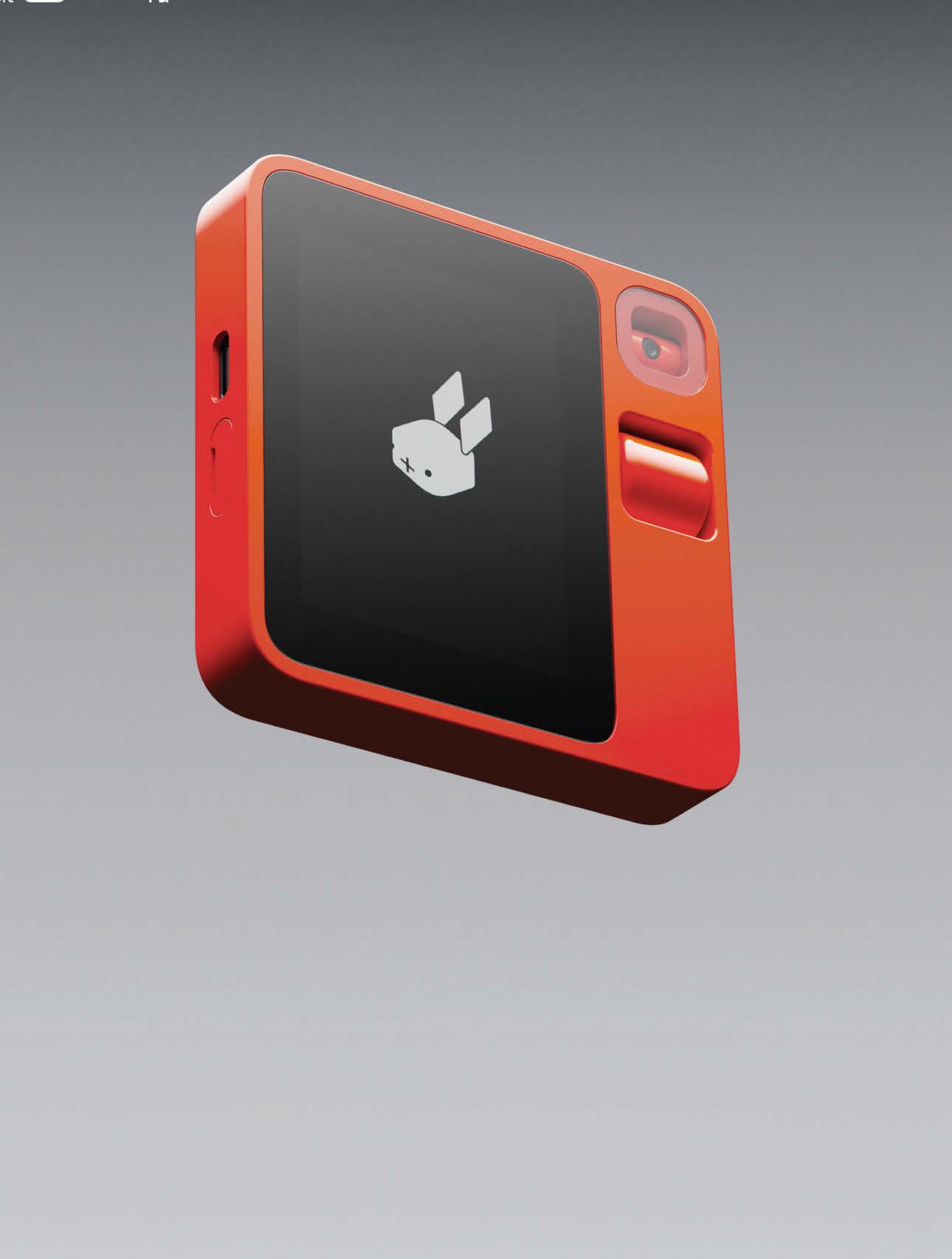
Run the prompt “Make me the love child of Ask Jeeves and the Terminator” through an AI image generator and you might get this: the Rabbit R1
AI. It’s a term that comes up a lot. Usually followed by phrases such as “will change society as we know it” and “will do all our jobs for us”. But how, exactly? That’s a question Jesse Lyu, founder of AI startup Rabbit, hopes his frst device will answer.
The R1 is a pocket voice assistant with a touchscreen, scroll wheel and talk button.
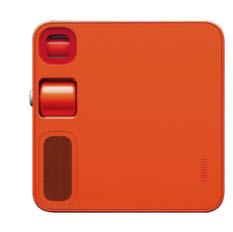
Using Open AI’s GPT-4 large language model (LLM), it can understand complex phrases and answer them via voice and display. But it also has a large action model (LAM) that can execute requests in the real world via all the apps you already use.
Ask it to get you home and it’ll order an Uber. Say you’re going to Paris next week and
The 180º rotating camera can handle video calls and analyse your surroundings. It closes in the down position to prevent your robot butler spying on you
it’ll book fights, hotels and dinner reservations. If you don’t like the itinerary, tell it why and it’ll fx it.
It also learns. Point the camera at a task you’re doing on your computer and the R1 can master it. Yes, even Microsoft Excel. And if that isn’t a terrifying vision of a dystopian future, we don’t know what is. rabbit.tech
f you think pillow fghting is merely a form of horseplay practised by people in adverts for fabric softener, let this be your wake-up call. This spring sees the release of Pillow Champ (pictured right), a quirky head-to-head brawler that’s essentially Street Fighter with added bedding. In the game, global peace has been achieved by channelling all negative energy into pillow fghts. The only threat to this sense of equilibrium is a group of mysterious ‘pillow ninjas’ who want to return the world to darker days.
Featuring eight fghters from diverse professional backgrounds – including a nurse, a lumberjack and a librarian – Pillow Champ has all the makings of a sleeper hit. Its real-world counterpart has already caught on and continues to grow in popularity.
Launched in 2021, the Pillow Fight Championship (PFC) is part WWF theatre, part UFC menace. The sport pits serious athletes, including seasoned MMA fghters, against one another over two or three rounds, armed with ofcial PFC pillows made from ripstop nylon and weighing 1kg.
Want to bolster your performance in the virtual ring? PFC CEO Steve Williams and its inaugural women’s champion Istela Nunes share some professional tips from the not-so-fufy world of real-life pillow fghting…
In professional pillow fghting, combatants are rewarded for direct hits to the head. “The best form of attack is the spin,” says Brazilian Nunes, who’s also a two-time Muay Thai world champion and pro UFC fghter. Spinning isn’t a feature in Pillow Champ, but landing combinations is –
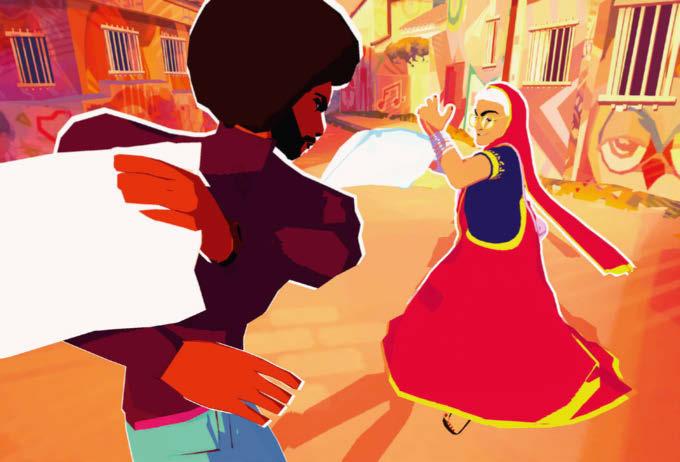
In Pillow Champ, gamers face off in a ‘featherweight bout’ with a difference. We asked two pros from the IRL sport of cushion-wielding combat for some supportive tips
and, as in the real-world sport, this is key to victory. “Try to pepper your opponent [with hits],” says Williams. “You want to get them of-guard, hit them, then follow up with more while they’re of-balance.”
If you’re in danger of getting smothered, don’t take it lying down – think strategically. “The best defensive tactics are shielding your head and weaving and bobbing,” says Nunes, whose superhuman dodging abilities played a big part in her PFC title triumph in 2022. “Growing up, I did [Afro-Brazilian martial art] capoeira. I think that the movement and rhythm I learnt has really helped me as a fghter.” As a result, Nunes has great cardio ftness, enabling her to dart in and out of close combat.
When selecting a character in Pillow Champ, look for one with similar traits.
Unlike other combat sports such as boxing or MMA, in pillow fghting there are no

“The best tactic for defence is weaving and bobbing” Istela Nunes,
benefts to crowding your opponent. “Don’t get too close or you won’t be able to swing with your full might,” warns Williams. “You need to judge your distance by thinking of the reach plus the bag [pillow]. It’s likely that the further back you are, the better you’ll be able to strike. If you crowd your opponent, it’s just self-defeating.” By allowing more room between the two of you in Pillow Champ, you’ll have more time to block or dodge, too.
Staying out of the reach of your adversary is one thing, but how do you pick your moment to launch an attack? Williams advises you to watch them and anticipate their next strike. “It’s a lot like boxing or Muay Thai,” he says. “You must read your opponent and, once they make a move, try to time it so that a) they miss, and b) you’re able to counterattack.” In short, timing is everything. You may be surrounded by pillows, but if you snooze, you lose.
Pillow Champ is out this spring on the Nintendo Switch, Steam and Netfix Games; pillowchamp.com

Max Verstappen’s detractors claim his success is all down to having the best car. If they were racing here at the new official F1 karting experience, they’d all be in the best car. Racing around a 500m circuit with 17 turns, the karts feature an F1-style steering wheel showing a live course map, plus buttons for DRS (drag reduction to overtake opponents) and ERS (a power boost). There’s even the voice of a virtual race engineer piping live updates into your helmet. Of course, Verstappen began racing karts aged seven, so he’d probably still win. Tottenham Hotspur Stadium, London; tottenhamhotspurstadium.com
There’s no better example of the progress of women’s surfing than what occurred at Hawaii’s Pipe Pro this February. There, 21-year-old Molly Picklum scored a perfect 10, and 18-year-old winner Caitlin Simmers declared, “Pipeline’s for the fucking girls.” Helping bring newcomers into surfing’s fastest growing sector are these dedicated women-only sessions at Bristol’s The Wave. With a 180m-long lake generating up to 1,000 two-metre waves per hour, it’s an ideal way to learn or just let rip. Sessions are accompanied by pre- and post-surf yoga and live music. Plus, visitors can glamp it up in fully featured, safari-style accommodation at The Camp at the Wave. WashingpoolFarm,Bristol;thewave.com

Perhaps you’ve seen it in your area: people playing what seems to be tennis within perspex-walled courts. This is padel, the racket sport taking the world by storm. A mix of squash and tennis, in padel the walls can be used to rebound the ball, creating faster, more intense rallies. The sport already has more than 25 million players, and since 2022 it has had its own pro series featuring the likes of Spanish world number one Juan ‘El Lobo’ Lebrón (pictured). The 2024 season spans 25 tournaments across 18 countries, with the top eight players entering the Barcelona final this December. Check out the full schedule at premierpadel.com, and watch the livestream of each leg on Red Bull TV. redbull.com

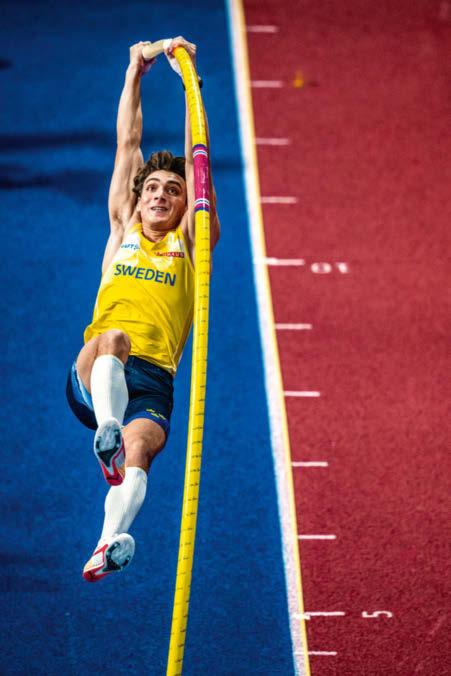
Mondo Duplantis owns the top eight pole vaults in history. More incredibly, the Swedish-American achieved all of them in the last five years, his most recent a staggering 6.23m last September. This documentary on Red Bull TV follows Duplantis’ attempt to take himself a centimetre further as he heads to the Olympics this summer. “I don’t think in world records,” he says. “I think in personal bests.” redbull.com

30 April to 24 August SPIRITED AWAY
In March, animation director Hayao Miyazaki won his second Oscar, for The Boy and the Heron; his first was for SpiritedAway in 2001. This stage adaptation by John Caird (LesMisérables), in Japanese with English captions, perfectly captures why. London Coliseum; londoncoliseum.org
Lukas Scharmbacher
Art Direction, Commercial
Peter Knehtl (Manager), Florian Solly
Head of Publishing Operations
Sigurd Abele
Direct to Consumer Business
Peter Schiffer (Manager), Marija Althajm, Melanie Schmid, Yoldaş
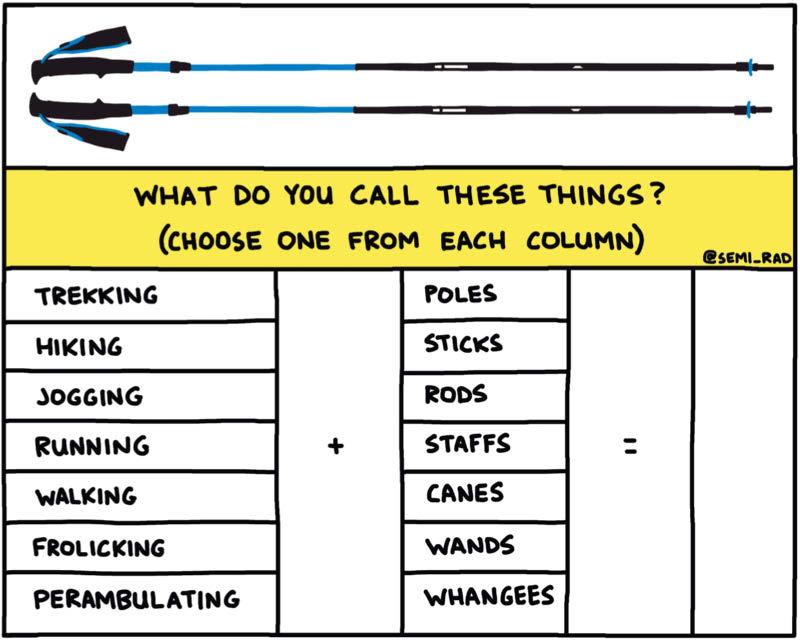
“I finished a very difficult 100km trail ultramarathon a while back, and one of the rules of the race was that if you started the race with trekking poles on your person, you had to finish with them on your person; if you started without them, you had to finish without them. When deciding whether or not to use poles, I considered the fact that I was a middle-aged dad barely in shape for something like a mountain 100K, and that I’d need them not to help me perform my best but simply to survive. So I carried them the whole race, using them as much as possible, including running downhill. Even though no company sells something called ‘running poles’, that’s what they were. After the race – which I survived thanks to my running poles – I was talking to another runner, a guy in his fifties, about how he’d done. I asked if he used poles, and he said, ‘Poles? That’s cheating.’ I get why he would say that, but you know what, man, it was right there in the race rules that you could use poles, so it definitely wasn’t cheating. But hey, each to their own.”
The next issue of THE RED BULLETIN is out on June 11

